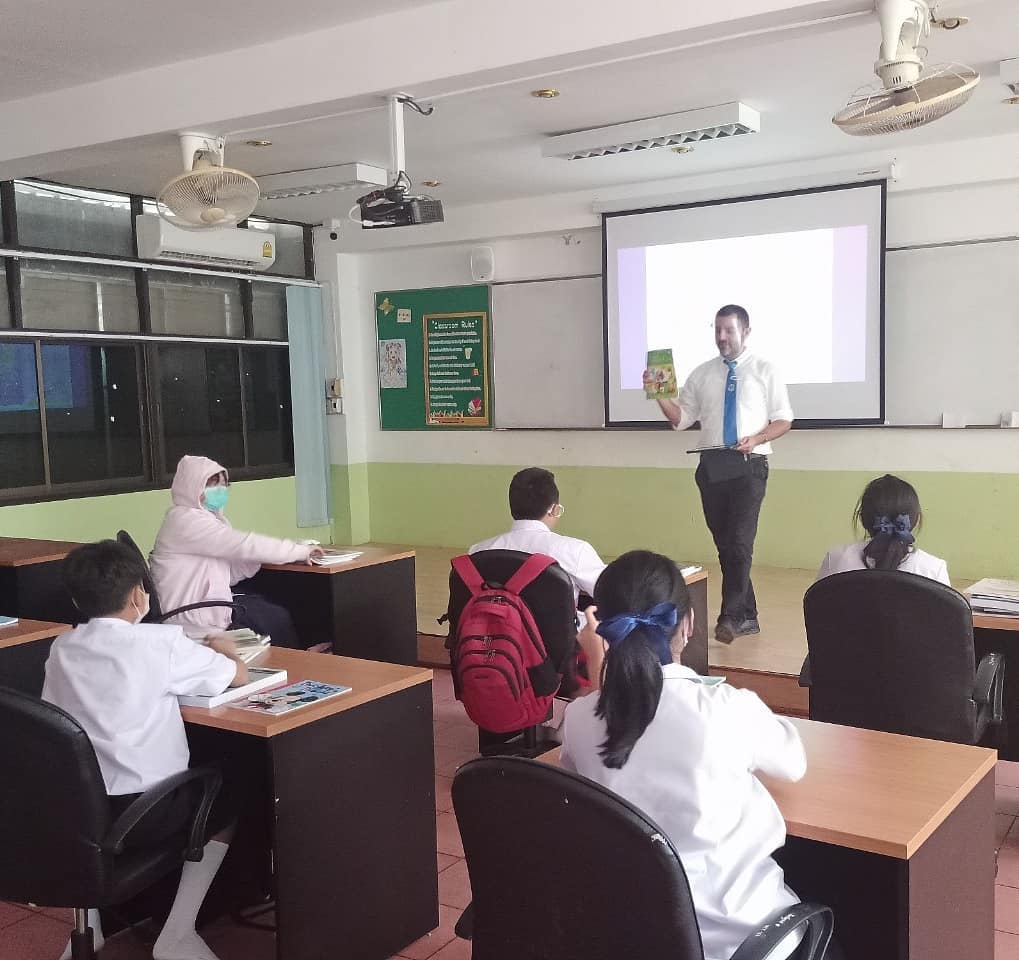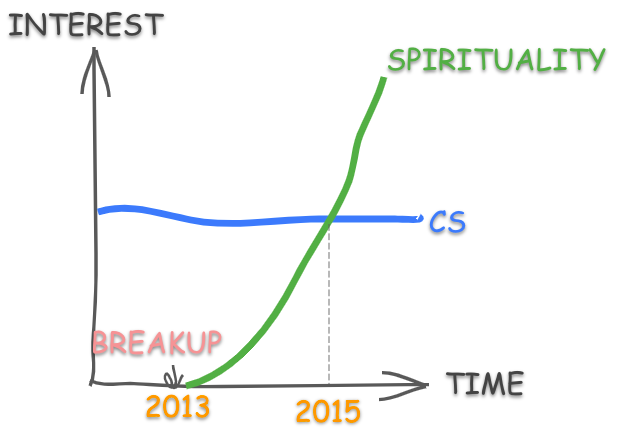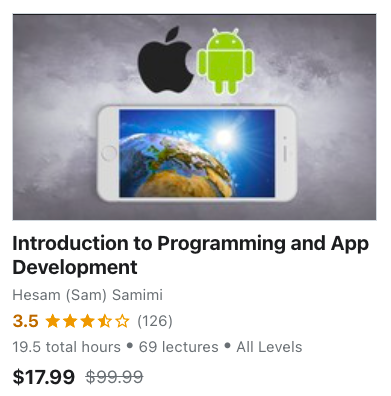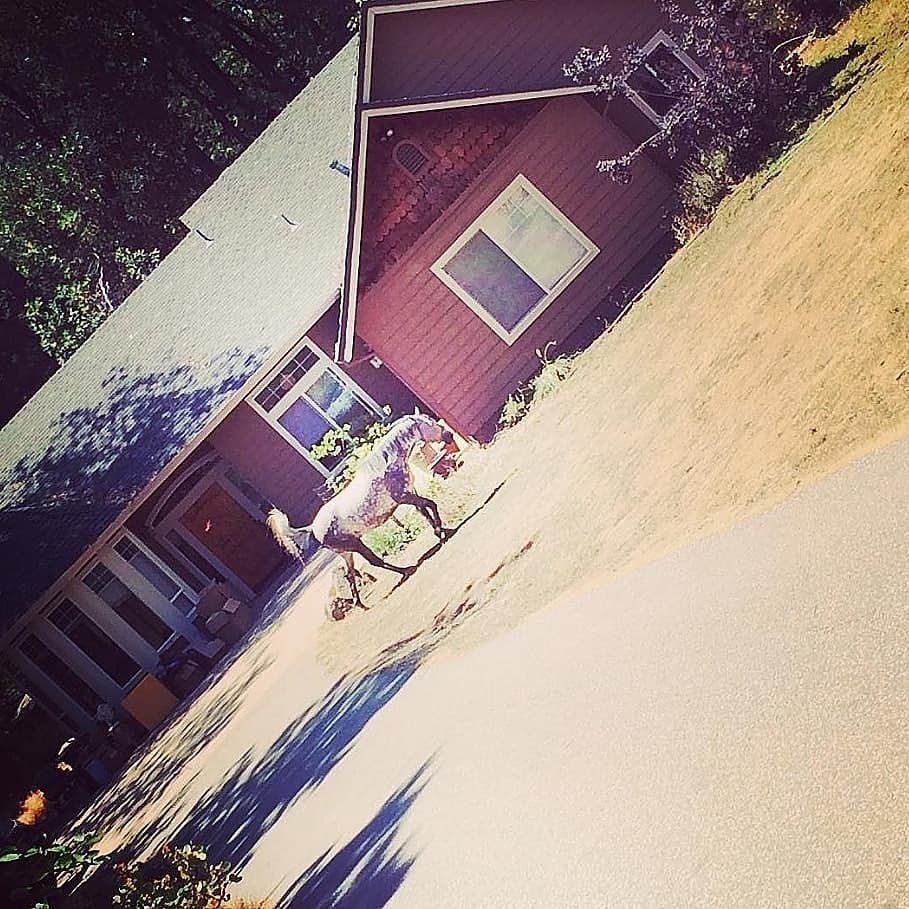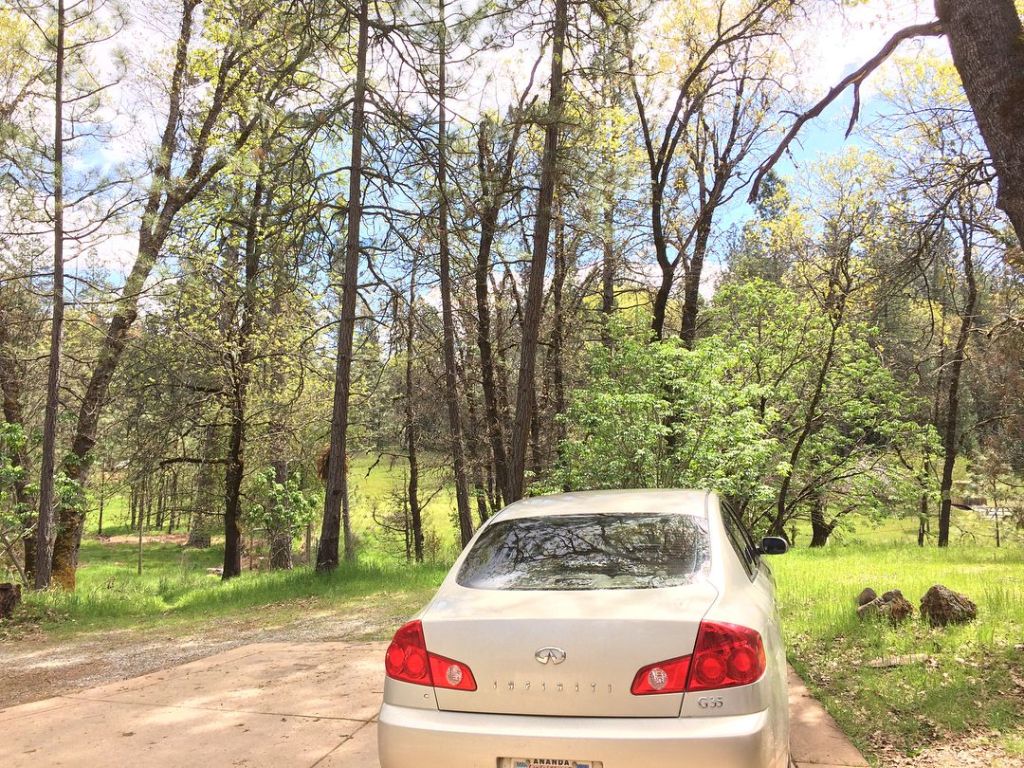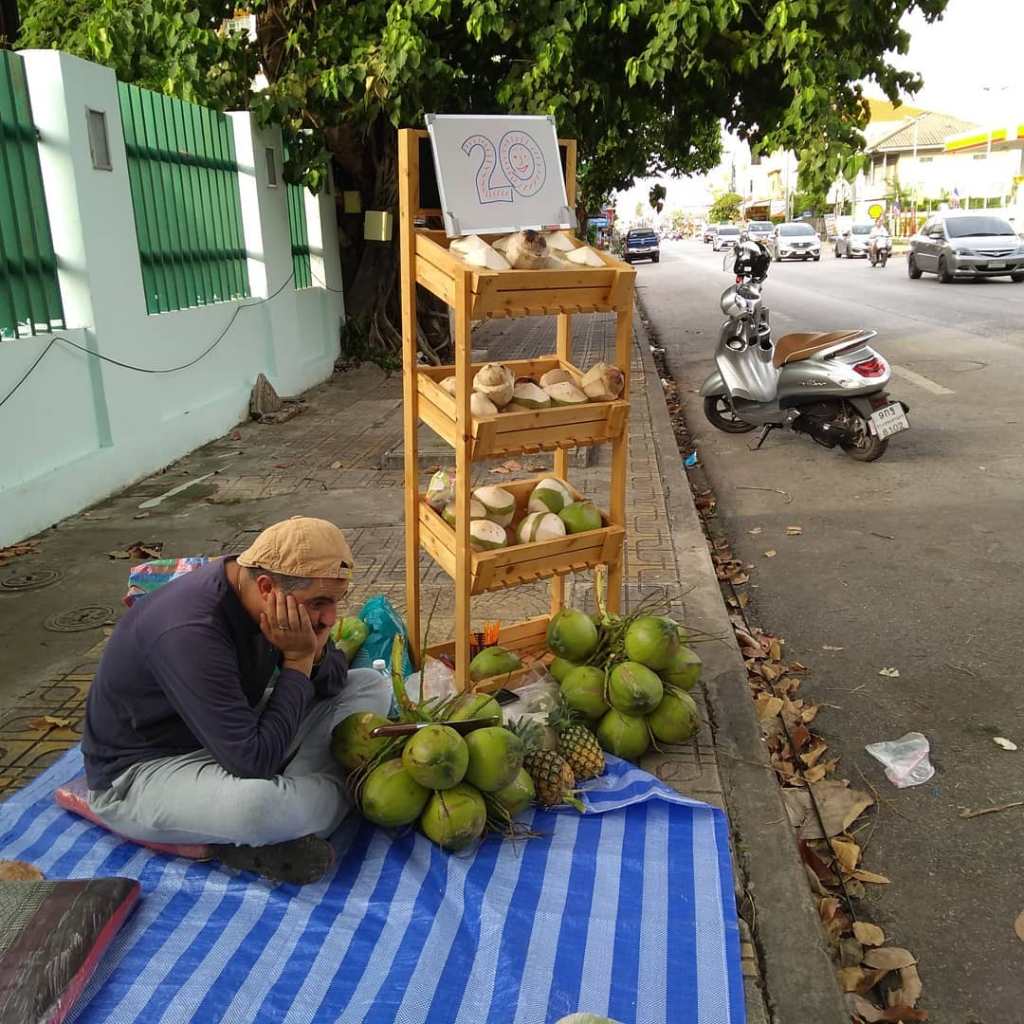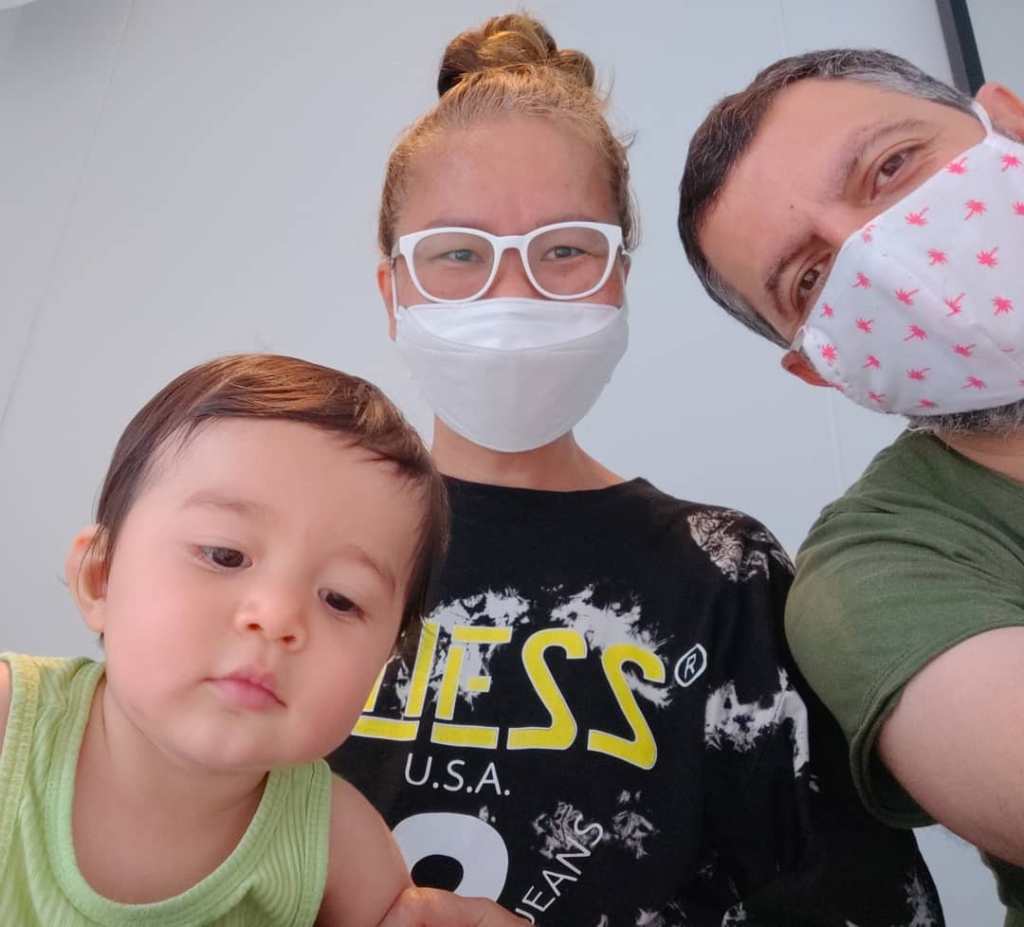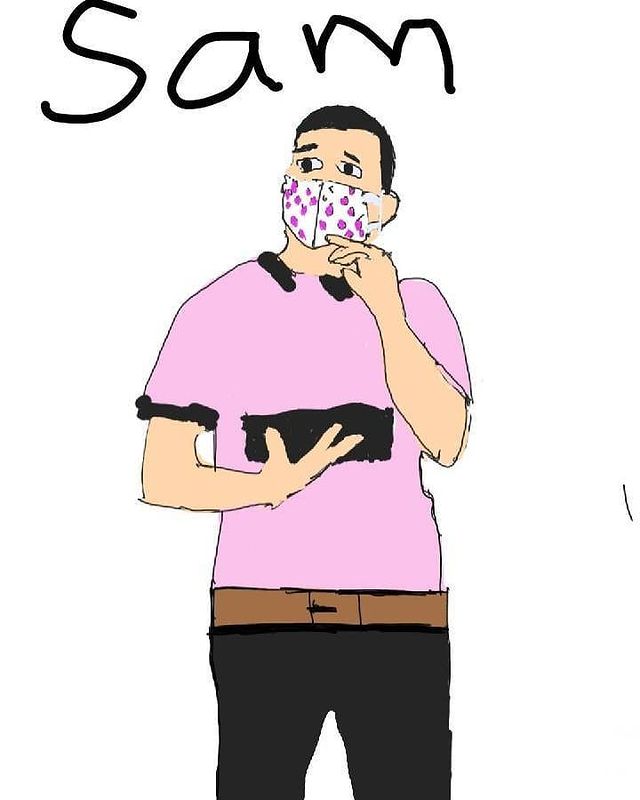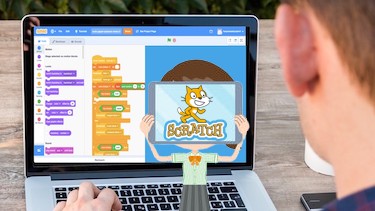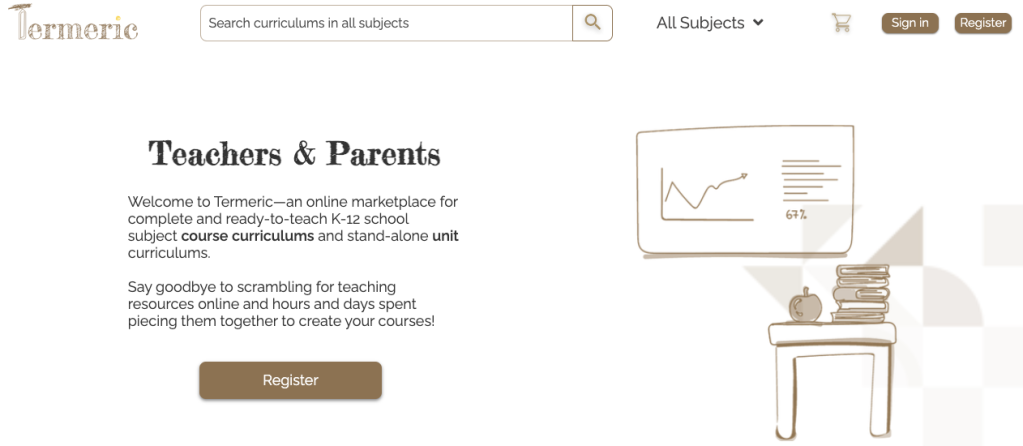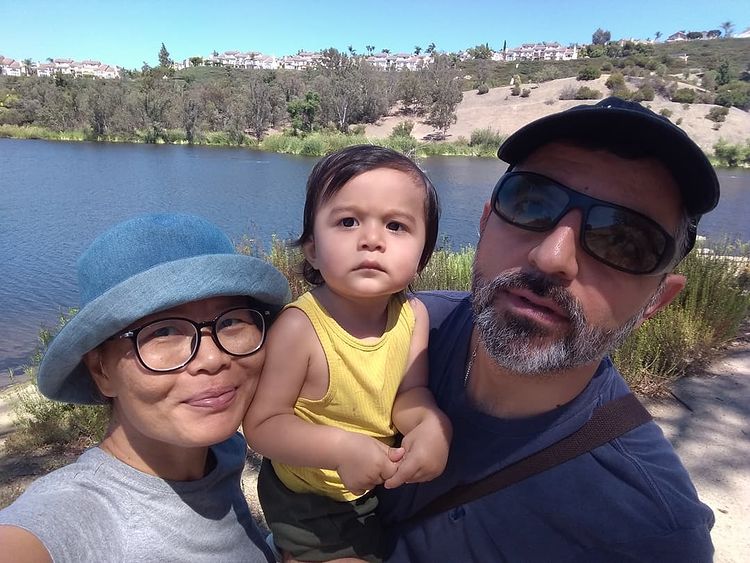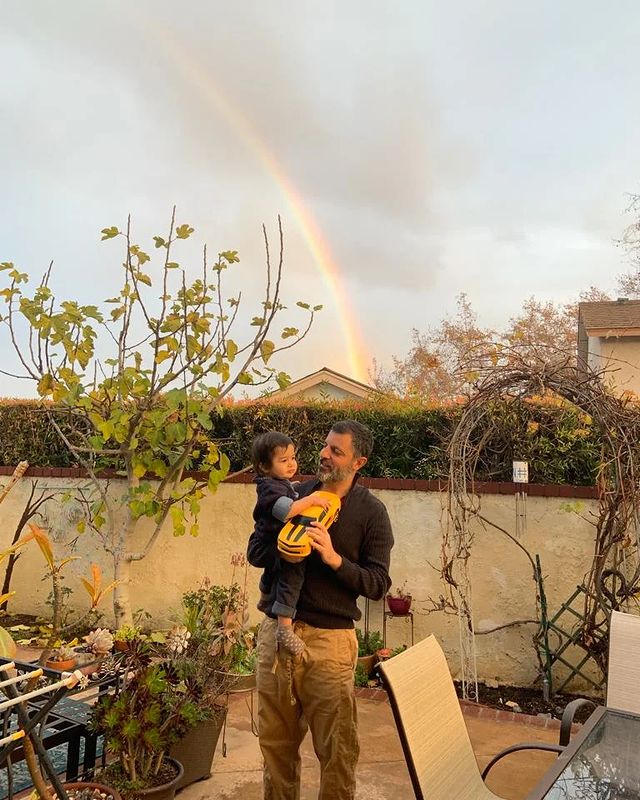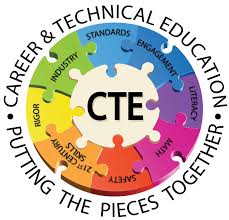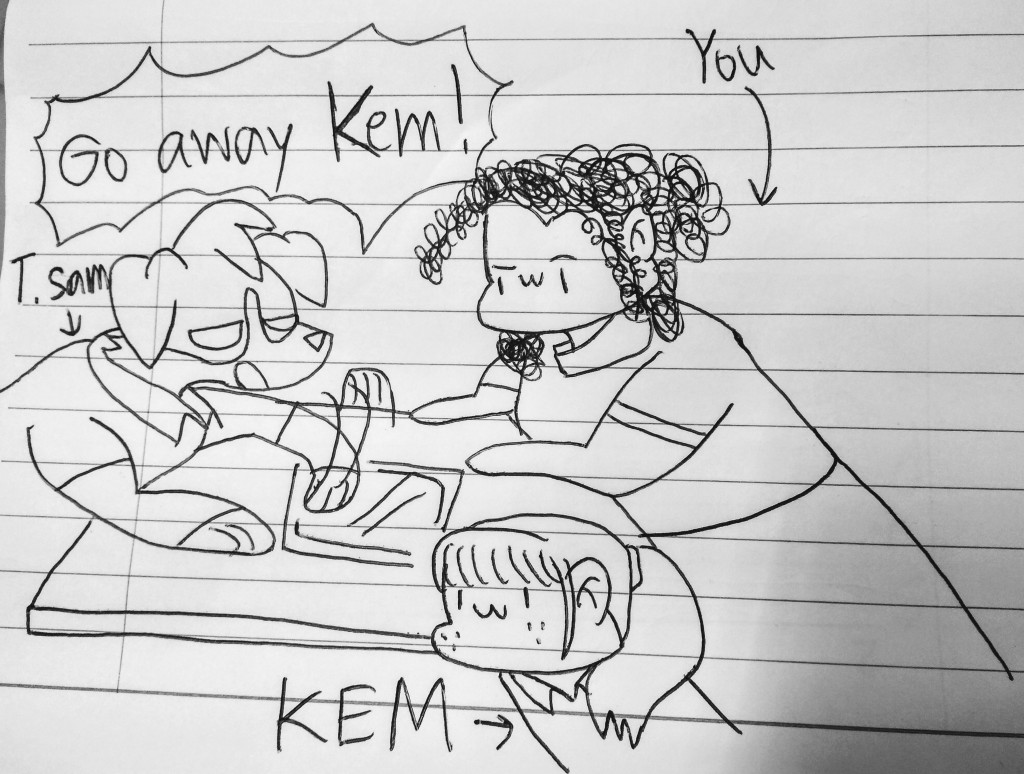
Introduction
Pretty early on during my graduate school years at UCLA (which numbered six in total), I had a struck of luck to get affiliated with the computer science legend and pioneer Alan Kay. He happened to co-teach an independent research course with my future graduate advisor and he liked my out of whack, innocent ideas and naive enthusiasm for using the algorithms of AI (Artificial Intelligence) for the general task of computer programming.
Quickly, I was part of his small inner circle of student researchers, mentees, and disciples. Years before defending my thesis, my career path was lit and clear as day. Not but a few days after defending my thesis, I started my six-figure salary job as a computer science academic researcher with Alan’s eclectic team. No resume writing. No job hunting. No interviews. No decisions to make.
Boy am I a lucky guy. There was no shred of doubt in my mind that mine is destined to be a life of pioneering new frontiers in computer science and programming languages, as an academic and perhaps a professor.
But one of the most valuable lessons one can learn in the course of a lifetime is this:
What one knows now may turn out to be wrong later.
A few years before, I wrote a series of blogs The Love of My Life: A Head to Heart Journey, in which I recounted the story my past love of life. I talked about how there will never be any other…
That was my 30s. Now I have entered my 40s, married, and am lucky enough to have found another.
And just as I was wrong to make a proclamation about the lack of a future love life, so was mine on a vision for a career path.
This is the story of how I turned away from a present and future in computer science academia to eventually become a school teacher of computer science.
Part 1: From CS To Yoga
I didn’t quit my computer science (“CS”) research job in order to become a teacher. My transition path from CS to teaching was rather an indirect, long-winded, unintentional, and incidental (or in spiritual jargon: guided by the spirits) one, spanning over several years.
2013 had brought me a painful breakup from “the love of my life”, followed by my graduation from UCLA and the start of my computer science job as a full-time academic researcher.
I was thoroughly enjoying my job and career. At the same time, however, the suffering following the breakup had led me to discover spirituality. It was by way of coming across a book called Autobiography of a Yogi and subsequently becoming a follower of its author: Yogananda. I recounted the details of this journey from CS to yoga in a previous blog series How I Came to Live in a Spiritual Community in the Northern California Foothills.
It was something like the plot below. My excitement of CS had not diminished. What was happening was that my interest in spirituality was shooting through the roof. So, one April night in 2015, as I was driving through the freeways of Los Angeles, a bomb dropped in my mind: “You need to quit your job to make time for spiritual work.”
Part 2: From Yoga to Ananda
My dive into the spiritual teachings of yoga was rather abrupt and head first. So much so that, once I quit my CS job and made the switch to the spiritual teachings and work, the thought of returning to computer science and academia didn’t even visit my mind. I had happily declared myself an early-retiree of computer science. “It was good while it had lasted…”
It’s just that, at that time, what I had been busying my mind with during my career seemed so petty and insignificant, when compared to the grand truths and matters of spirituality that I was beginning to delve into.
Now, without a day job, I had all the time in the world (and a well-stocked savings account from a couple of years of my high salary job) to dedicate myself to the spiritual work. I had become a prolific spiritual poet, working my way through translating spiritual English text to my native language, and within a few months, I had completed my yoga and meditation teacher certificates. Not before long, I had packed my car to go live at the spiritual community of Ananda Village in northern California (How I Came to Live in a Spiritual Community in the Northern California Foothills).
Part 3: At Ananda
I arrived at Ananda Village some late 2015. The place is a community of some few hundred followers of Paramhansa Yogananda. They have joined there to live a life dedicated to learning the teachings of yoga (specifically as taught by Yogananda), as well as practicing to apply those teachings during one’s daily activities and life (for example, to stay centered and calm during an altercation that might arise at work, or to apply one’s energy and work without being attached to any certain outcome).
Life at Ananda for me, and I think for most people there, is about focus and simplicity. After all, their motto is “Simple Living, High Thinking.” It’s about a dedication to focus on one’s spiritual path and practice, while simplifying life as much as possible down to what one’s form of service and activity is, whatever it may be: raising a child, installing electric cables for homes, farming veggies, or healing the sick.
My first form of activity — “job” — was to help with the task of maintaining the yoga retreat there: cleaning the halls and bathrooms, prepping food, etc. It’s no surprise that my simplified life and simple daily routines and practices during those first 6 months at the job brought me to new levels of peace and happiness. Once inseparable from my laptop, I now barely even opened it. I had no desire to. Nor did I ever thought of my “past life” as a computer science or programming person.
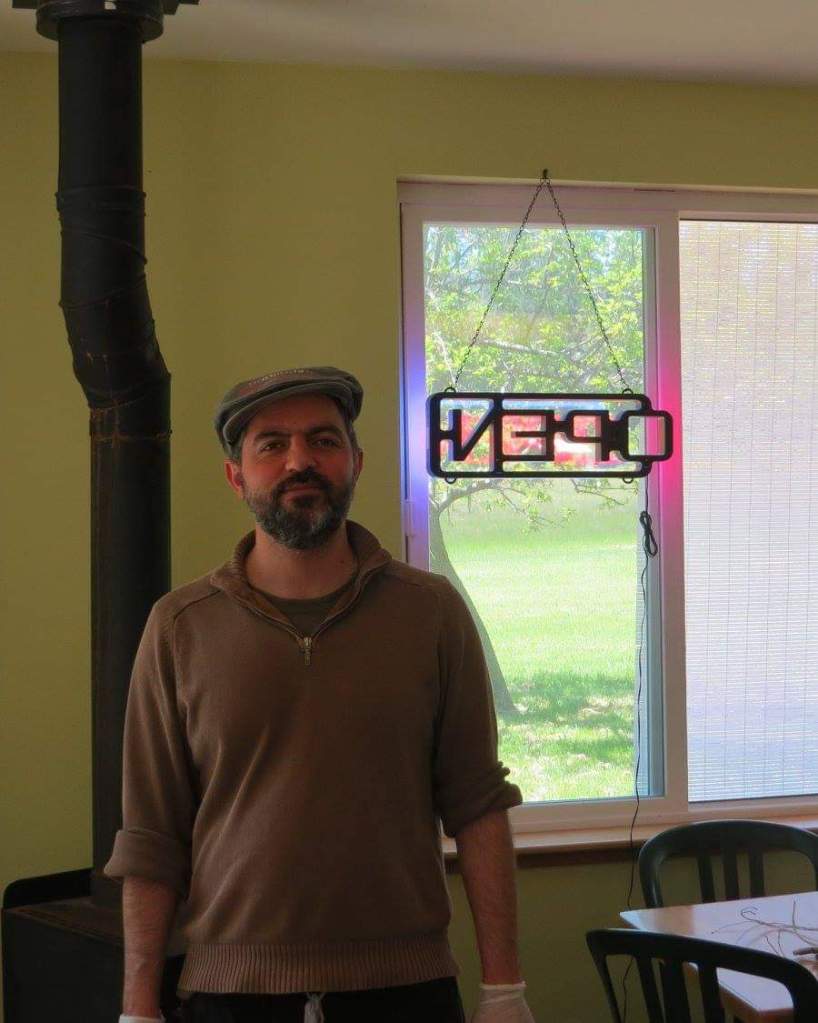
Part 4: From Ananda to Apps
In mid 2016, my initial 6-month stay at the Expanding Light—the retreat center at Ananda Village—concluded. I now joined a group house there as a new, proper resident at the village. This was around the time “apps” were still the “new cool thing” for everything and everyone.
I don’t remember if I volunteered myself, or I was volunteered by someone else: but, as a guy with a hard to find expertise in coding in a village of only a couple hundred people, I was set out to create a prayer app on behalf of Ananda.
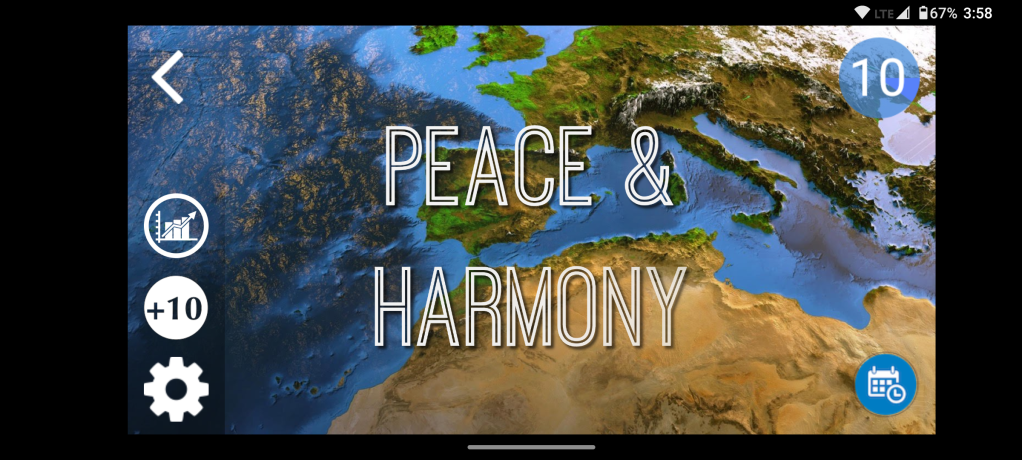
This seemingly insignificant and irrelevant event of me returning to my abandoned laptop to make a little mobile app as innocent as this actually set in motion a series of other events that led to my gradual transition to becoming a computer teacher.
Now, I actually had no experience in mobile app development. But I was an expert in programming after all, so picking up and finishing up this task proved quite quick and easy. Not long after that, as my new regular paid job at the village, I was commissioned to do a more serious project to develop Ananda’s first meditation app (since then the app has been redone by others).
By the end of some 9 months of working on this project, the app was published. In a past blog, I talked about my experience of creating and publishing this app.
I was now quite versed as a mobile app developer, and soon was having ideas in my head for new app development projects, both for myself and for Ananda’s various institutions.

Part 5: From Apps to Teaching Friends at Ananda Village
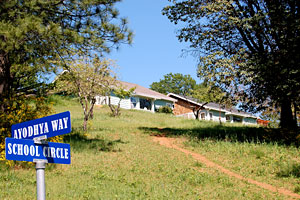
Once I was freed up from the meditation app project for Ananda, I was having a few new ideas for the next app development projects, all related to spirituality.
It became clear quickly that I couldn’t do this alone. I needed help. I needed a team. But I wanted to work with people who believed in the kinds of projects I wanted to do. I wanted spiritually inclined people, better even my own Ananda Village fellow disciples and friends. This gave me a rather naively optimistic and impractical idea to offer a coding class at the village, training my own friends so that we can build a development team, so that we can take on my project ideas!
So I contacted my UCLA graduate advisor and with his permission I took the notes on his undergraduate programming languages course and adapted them into a crash course that introduced the fundamentals of programming languages and iOS/Android mobile app development together. I advertised my new course to my fellow Ananda Villagers.
That only 3 people showed up on my first class, which I held inside a loaned classroom at Living Wisdom high school (https://livingwisdom.org/) at Ananda Village on a Saturday morning, can be thought a decent success, if you consider that the whole village is home to only some one or two hundred people.
The course I created was actually good. The outcome not so. Only one faithful student friend of mine made it all the way to the end of the 10-session course. Nor did it look like I was going to have my DevOps team after all!
Part 6: From Teaching Friends to Udemy Online
Somewhat disappointed that my app dev lessons had only reached the ears of one man, it occurred to me that I could increase my target audience from 200 to 5 billion by putting up the course online.
For those who haven’t heard of it, Udemy (among others like Khan Academy, Coursera, Udacity, and others) is an online self-paced video course marketplace. Udemy is completely crowdsourced and courses are self-published by ordinary people like you and me. Anybody who has any expertise about anything can self-publish a course there to reach out and sell to student users. I had seen some of my friends publish courses there on their subjects, so I was pretty sure I would have no problem getting my course published there.
Thanks to my free work-life at that stage during my stay at Ananda Village, I dedicated my day times to converting my lessons to online videos. By one month’s time my first course Introduction to Programming and App Development was on Udemy.
It was October 2022, some 5 months past my family’s arrival back to the US and the start of my teacher job hunting saga. With each passing week I felt like the stress and accumulated pressure stored in me were bringing my closer and closer to a real breakdown of my body.
I had now made the turn from computer science academic to teaching, albeit online and on programming apps for adults. The next move, as part of my transition to teaching computer science to youths, happened yet due to another (seemingly random) event at the village. That’ll be the next part of the blog.
Since then I have published other courses on Udemy, all on the topic of computer science for schools.
Part 7: From Udemy Online to Living Wisdom School
Ananda Village is an intentional community. The word means that the couple hundred people who live there aren’t there, together at that location, by happenstance, as in a couple hundred people who might live together on a block in a city might be. The fact that most people there (save those who were born there) made a conscious choice to leave their past homes and go live there for a common goal makes the place an incredible place, in terms of the things and people you would find in it. I’ll start with its people.
I remember my mom’s first visit to the village. Understandably, she had rather unsettled feelings about my leaving of my past career and life to go live there. One time, at a dinner table, she made the remark to someone: “My son has a PhD!“. It was funny because she didn’t know the man in the spiritual robes whom she was talking to himself had a doctorate in mathematics!
One such incredible person living there was Cliff Kushler—who is the inventor of the Swype: the swiping motion typing technology on mobile devices.
An example of incredible things you can find at the Ananda Village is the Living Wisdom School there. Established in 1973, it is a special kind of K-12 school, based on the ideas laid out in the book: Education for Life, written by the founder of Ananda Village. The main idea is that the school should be training grounds to prepare our kids on all realms of growth and maturity needed to live a happy, successful life, not merely for academics. Education for “life”.
Back to the examples of incredible people… I had made friendship with two young teachers at the school there by the names of Kamran and Bryan. I had seen and admired so much how they were with the students. To this day they remain the two people who have influenced me the most in the style of a teacher that I have become. Their way of interacting with the kids as a respected friend, rather than a distant authority, just aligns best with my character, not to mention makes being a teacher so much fun!
In any case, I followed what was going on at the Living Wisdom School with interest, yet at a respectable distance. While I did like the idea of the possibility of teaching the kids there, I knew full well that, unlike my two heroes there, I was not a trained or licensed teacher. My chances of being enlisted were grim.
As it happened, I did get enlisted. Perhaps the fact that I had advertised my app development course at the village had put me on their radar. So one summer day in 2017 I received an invitation from Bryan to join in their course planning session for the upcoming school year. They wanted me to join up with Cliff to teach the kids a course on programming.
I was ecstatic! And grateful to the divine flow that was making my career transition possible!
Part 8: First Teaching Gig at Ananda Living Wisdom School
And so it came to pass that I got my first school teacher gig, at Ananda Village, Living Wisdom School, during the 2017-18 school year.
Most people don’t know, nor was it clear to myself until recently, that Ananda Village, above anything else, was my teacher career launching pad. I hope by now, this far into this blog series, as I have recounted the course of events thus far, you can see why perhaps no place else could have brought me this gradual blessing.
Sure, I was at the village due to my discipleship of yoga teachings and of Paramhansa Yogananda, but I had my spiritual awakening, learning of the yoga teachings, and the beginnings of my discipleship in Los Angeles, before moving to Ananda Village. The place surely serves different seekers in different ways!
Over the course of a year or so, as a part-time teacher at the Living Wisdom school, I got my first experiences in teaching in a real, albeit special and super small, secondary school.
I absolutely loved being among the middle/high schoolers. Come to think of it, I’ve always felt more at home with kids, especially the teens, more than grownups. It always feels like I’ve more in common with them, understand each other better. Grownups–I’m sorry, no offense to anyone—are usually kind of boring!
This period was absolutely transformative for me, giving me the confidence boost and practice to truly step into the role of a school teacher, as well as an independent curriculum developer.
In the next part, I share a bit on some of the courses I got to create/teach there and my experience with the kids.
At the end of the day, our karma and the divine provider will bring us exactly the things we really need at exactly the times we really need them (and not at the time we really want them 🙂 ).
The district CTE director who was interviewing me was none other than the lady who, some 4-5 months before, at the beginnings of my struggles, had responded to my application then to tell me about CTE. Moreover, she was telling me at that time she actually expected me to reply back to tell her that I would go ahead and start my CTE credentialing program, so that she could consider me for the open position at that time! I had only assumed she had rejected my application five months before!
Part 9: First Experiences in Teaching Computer Science to Teenagers
Excited to jump in, I quickly put together a course that introduced some important concepts in computer science to teenagers.
My thinking was to make it all hands-on and project-based, with little or no instructions or introductions. It was something that came naturally to me. At the time I had no knowledge of the Montessori philosophy of education.
In Montessori, the kids are given props/toys and put in an environment that is conducive to learning a particular skill, yet are not directly supervised. The learning occurs in a natural, self-discovery way. In the same vein, for each lesson I would create a project starter/web page, and have the students jump in, explore, tinker, and hopefully learn the computer science concepts in their own ways and though their own understanding.
I called this course High School Computer Science and Programming Workshop. It is a hands-on course and free to access, if you’re interested to check it out. I later published the video version of the course on Udemy.

The school had me start teaching this course to all of our high schoolers (who only numbered some 10-15 students!) at the Living Wisdom School at Ananda Village. The hands-on, exploratory nature of the course did generate enthusiasm in most kids. Nonetheless, I quickly learned that, in an average classroom, students’ interest, enthusiasm, and intellect varied hugely, when it came to learning computer science and programming.
So after a few weeks, it was decided that I would teach this and other programming courses to a select few students who were super interested in computers and coding.
Later on in my journey as a new school computer teacher, I got to teach the computer science subjects in situations where the subject was mandatory for everybody (or as a popular elective), where the classroom was large and diverse. Through these experiences I got to observe the perception and opinion of the students, when computer science was given and treated just as another subject in the curriculum (as in english, math, and science). Students on average are perfectly accepting computer science as an important/interesting thing to learn, and willing to give it a try, boys and girls alike.
Another invaluable thing that I was able to quickly pick up from my early experiences teaching computer science and coding to the kids was that it can alienate, bore, and discourage more right-brained (girls a bit more often than boys) students, in a hurry.
Later on, it has always been my attempt to seize the opportunities to balance the logic and problem solving parts with arts and creativity aspects, when creating and teaching lessons. I have seen how giving students opportunities to engage in both left and right-brained aspects of a project can help them align the work more according to their own nature, and stay inspired and thrive. I always aim to let the students’ own natural abilities dictate where the focus and effort will be primarily placed, when assigning a project.
Later on when I got to be a computer teacher in a Thailand school, I used to have a female, 8th grade student, who was one of my favorites. (There you have it: I admit to partiality!) She did reasonably well on the coding parts, but boy did she put her heart and soul, not to mention her super artistic talents, to show when she was doing the creative design parts of a project. Where most every student used some shapes and sprites from the existing library or by searching images on Google, she hand-drew (or mouse-drew to be more precise) every character and scenery, added sound bits and music, story lines not asked for, and more! Seeing the works of art she would put into the projects made my heart sing.
That is one of the reasons I favor using a sprite-based, block programming languages such as MIT’s Scratch, when introducing kids to coding. There’s so much room for kids to readily exercise their creativity and artistic expression and personalize their work.
Part 10: The Part-Time Teacher at Ananda Living Wisdom School
My part-time teaching opportunities at the Living Wisdom School spanned a year. Beyond teaching the kids computer science and programming, I got to teach classes in algebra, yoga, a discrete math course that I had just created, and even a history of science class.
Teaching science was an interesting experience. Now, when Kamran invited me to take on teaching the subject to the 6-7 graders, I knew I had no business teaching science. As a code nerd guy, I knew close to nothing about science… No, the “science” at the end of the “computer science” isn’t quite the same thing!
Yet, I came up with an ingenious idea that Kamran graciously played along with. And I am grateful to him…
I agreed to do it if I could plan the course to be on the “history” of science and math. I found two books—one on the history of great milestones in science, another on those of mathematics. I then assigned each kid a few items from each book. The kids would individually research their items and then present them to their classmates.


It worked like a charm. I didn’t have to do anything! The kids did all the work! And more importantly, and on a more serious note, they got to practice some important skills: online research, independent work, public presentation and speaking, peer feedback, etc. On top of that they seem to enjoy the class a lot.
I loved exercising my creativity in designing lessons and courses, even though this was not my “subject”. This experience afforded me more confidence as a teacher and a curriculum developer.
Part 11: End of Ananda Phase
My mom once told me that individual phases in life usually come in three-year spans. For me, personally, this has been the case several times. On the topic, my stay at Ananda Village ended up staying true to my mom’s call. Three years!
The feeling that my stay at Ananda Village was nearing its course completion came gradually, and through multiple facets. No sense to lay out all the details and reasons here. I’ll stick to what’s worth summarizing:
It is evident to the mind now, when one looks back at it all. A big part of my landing at Ananda Village had been to launch my school teacher career, even if the purpose was without my own knowing. The Living Wisdom School had done just that for me. However, for my teaching career to take on, I had to look beyond our village and our little school.
But as my guru Yogananda says, “reason follows feeling.” The mind always tries to find a way to justify the feeling that had already been there about something, prior to any thinking or logic!
The feeling comes first. And, to be sure, there were the feelings that had to lurk in and do their work, in order to push me out of Ananda Village–my home of three years, in the northern California foothills of Sierra Nevada.
What were those feelings?
As you recall my story, once I had landed at Ananda, after a one year hiatus in computer work I eventually returned to my laptop work as an app developer. This event made me feel excited and useful, yet it brought me old challenges and feelings.
Here I was, in my mind now an “experienced meditator and yogi”, thinking that I had found lasting peace and presence of mind! Yet, now that I was back doing the “heady” coding stuff, I often found myself back in my old self: Lost entirely in the “problem”. The joy was often absent. The awareness and presence in the moment was often lost.
The thought came to me: We, at this serene, protective environment of our little spiritual community aren’t doing the hard work, nor have we solved our personal vices. We’re mostly avoiding our personal challenges by staying in this easy “bubble” of simple, yoga living!
Could that be true?
Around this time, there was this shift happening in my view of the world. I started to feel inspiration more and more outside of my own community, in the “real world”, than in my own. Sometimes I would go out of the village to visit the nearby town Nevada City. I would meet random people, like a cashier at a grocery store, who were going at their normal lives and doing their normal jobs, yet radiated such joy and love: Full embrace of God’s life. With all its joys and sorrows.
I was becoming more and more observant of the ways “normal” people in the outside world inspired me, while some people in my own community (calling ourselves “yogis” and “meditators”) disappointed me.
Such experiences were the blessing which directed my focus towards where my next level of spiritual growth was going to take place. I sensed that, at least for me, the next-level in spiritual maturity was not to go deeper into seclusion, away from the outside world and worldly ambitions. Rather, it was to embrace the outside world and life, whilst never losing the presence in the moment and love of God, anytime and anywhere.
For me, Ananda Village was the training grounds for the battle in the battlegrounds of the real world.
And so eventuality the day came when I had the full clarity to know that the time had arrived to find my next steps outside of Ananda village.
Part 12: Taking Flight from Ananda Village
It was May 2018 and settled in my mind that I was to move out of Ananda Village. I began to look for teaching jobs, naturally in Southern California, where I had been prior to moving north and where my family lives. The San Diego area, in particular, was on my mind: I had heard good things. I had never lived there, so it represented new beginnings. And it would be far enough and close enough to my parents!
I had a close friend at the village who had been a resident around the same time frame as myself. We had a lot in common: For one, we were both educators at the school there. More interestingly, we shared the same recent experience of increased tensions at the village and an itch to move out and step into the outside world and a new phase in our lives.
We talked about the possibility of looking for a shared new town. It was exciting to hear that she too was considering San Diego area as a top option.
There was yet another development in the works…
Ever since my first and only romantic love experience had ended some six years before that, I had lived a monk-like life. I had no desire for seeking a partner or even dating. I considered myself lucky to have experienced it and gotten past it as well.
Yet, with the recent shifts in my mindset and inner feelings around that time, of which I have shared a lot thus far in this blog, came along also a new view on the matter. I came to think:
“Who am I to declare one way or another? How can I claim that I know? … My job is to be open to whatever life brings. Not seek it, nor resist it. Whatever ‘it’ may be, … including another experience in human love.”
With this thought, I opened up to my friend about having some feelings for her. Unfortunately (or would it be fortunately!), she wasn’t interested in me in a romantic way. This confession created frictions in our discussions about any shared plans for a new home town.
Though a bit discouraged about the prospects of having an “Ananda moving out buddy”, we moved on looking for jobs. I quickly realized my slim chances in finding a school teaching job in a regular school in the state. Most required teacher credentials and lots of years of teaching experience. I didn’t have a teaching degree. I was just a computer scientist who had recently also become a wannabe teacher.
Part 13: From Ananda Village to Bangkok?!
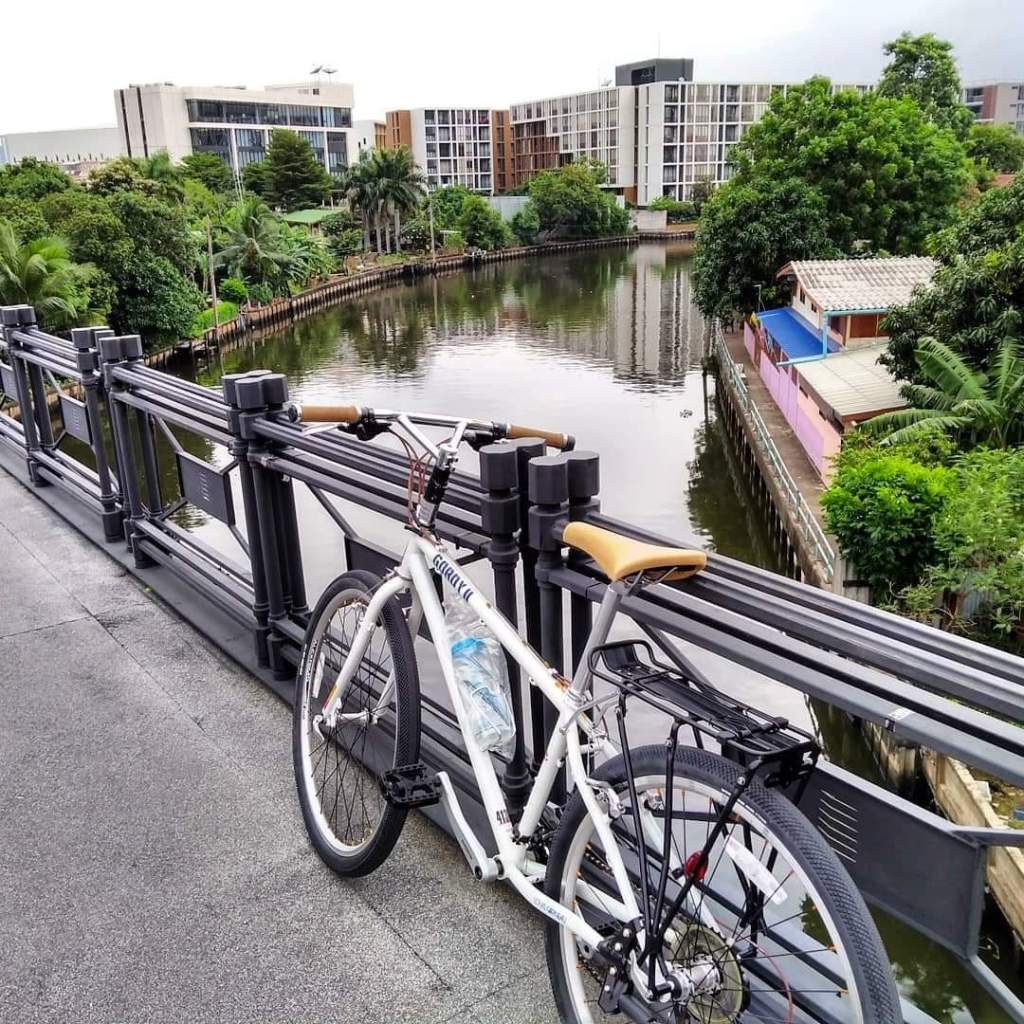
Over the years since the start of my spiritual awakening, I had come to know a heart-feeling kind of knowing—a kind of knowing which is calm, quiet, free of any anxiety, and super confident. I had become familiar with how this kind of knowing and heart-felt decision felt different from the times my ego was trying to assert its own ideas and likes and dislikes into the reality. I had felt this heart-feeling kind of knowing, for instance, when the thought had dropped into my head that I was to quit my computer science career soon after it had started. Similarly it was when I had decided to move to Ananda Village, as well as when the time had arrived to leave. In these cases, at the very moment the big thought or decision dropped (or once its gradual coming solidified), it felt like a foregone decision—the truth. There may be shock–“Oh boy, I’m going to do this…”, but there’s no confusion, or choices to make, or a need to go seeking advice.
My applications to school teaching jobs in Southern California didn’t seem to get any responses. Like I said, most schools don’t look at your resume unless you have credentials and years of classroom experience. I knew I would have a much easier time applying for computer science college/university professor jobs. My degree and work experience was in computer science after all, not in education. Sure enough, I started getting interviews from colleges and universities in San Diego and elsewhere. I even got an invitation to teach at Cal State San Diego.
But, somehow, despite the direction of my efforts at that time, neither becoming a college professor nor moving to San Diego felt like something that was really going to happen. It didn’t make much sense to me, nor did it felt right in my heart, to make a U-turn back to computer science academic work. After all, I had been excited about the momentum that had been built during the past couple of years in shifting my career from computer science academia to school teaching of computer science. But what am I to do if schools won’t consider me? Am I going to have to go back to college and get a teaching degree?
Meanwhile, my friend, with whom I had set an Ananda moving-out date and together talked about plans for finding a teaching job in San Diego area, dropped a news bomb one day: She had been applying for overseas teaching jobs and had taken a job as an English teacher in an international school in Bangkok, Thailand.
I was naturally disappointed. I knew my confession of having feelings for her had complicated things, yet I still felt somewhat hurt over having been left in the dark despite our shared plans. Nonetheless, my transition to a new life had to go on, be it accompanied with a friend or solo.
A few days passed, until one day one of those out-of-nowhere thoughts dropped into my head: “Who bounded you to San Diego? Why the self-imposed constraint? Nobody is waiting for you there!”
Instantly Thailand came into the picture… “Wait a minute, I too can apply for teaching jobs there!” Given our situation, I didn’t share my thought with my friend. But it was her who messaged me: “You should go to Thailand too!”
Perhaps better than having a companion to move to Southern California was having a friend to share traveling and taking a job overseas!
And so I started looking for jobs in Thailand. Within a few days, I came across a job listing from a K-12 technology education company in Bangkok called BSD. They said that they found my having a background with one leg in computer science and programming and another in online/k-12 education ideal for a tech education content developer role they were trying to fill. Within a couple of weeks, I had my offer and my work-visa was in the works.
The news devastated my parents. They had been expecting that after a three-year “Ananda Village” phase I was finally coming back (to my senses) to Southern California close to home, taking a computer science professor job. Instead, I was going to be even farther, in Thailand on the other side of the globe.
Worse even yet, my mom was distraught over my motives, since I had shared with her earlier about having feelings for my friend. In her eyes, “I was going to Thailand to chase a girl who wasn’t even interested in me. I was going to go, only to get crushed and devastated alone there…”
But I knew in my heart that it wasn’t the case. The Thailand decision felt the same as the other divinely-guided decisions I had experienced in the past. I knew it because I was honest with myself, and if it wasn’t I would’ve not moved forward with it.
Yes, I was disappointed that the occasion of my opening up to human-love after many many years had been met with a rejection. I was also sad that my friendship had taken a wrong turn. But I was at peace with it all. After all, the whole idea was to surrender to life’s agenda for me, rather than wanting one way or another…
I knew that my going to Thailand had a bigger, different purpose, though at that time the purpose was unknown to myself. I did know, however, that the K-12 tech-education job I was going to take in Bangkok made me much more excited than taking a university professor job back in California.
Looking back, it is easy to see. As I’ll share later, the opportunities and experiences in Thailand in the next three years were instrumental in completing my transition to a full-blown career in technology and computer science education for teenagers. Thailand afforded me the opportunities and experiences that were much harder to come by for me in the U.S., due to my lack of experience and degree in education at that time.
And it was so that 7/11/2018 (how appropriate since Thailand is filled with 7-11 stores!) found me walking down the tarmac at the Bangkok Suvarnabhumi Airport in Thailand. The occasion was with excitement, but also with confusion and disappointment: even though we arrived on the same plane, my friendship with my friend felt severely damaged and awkward.
Part 14: At Bangkok BSD
I landed in Thailand on July 2018 on a 1-year work visa. In my mind I was dreaming maybe even my work with the BSD team would blossom and I’d stay for a second year as well. What I couldn’t even imagine was that not only I would stick around for 3 years, but I would have a wife and a baby sitting beside me on my return flight back to the US!
My job title at BSD, as it was printed on my Thailand work visa, was “Technology Education Content Developer.” BSD is a K-12 technology education startup company based in Hong Kong, which has branches in several countries including the US and Thailand. I had barely gotten past my jet lag when I walked into the “coworking space” building, where the BSD’s software development team resided, on my first day at work.
Bangkok BSD was a team of less than a dozen software developers and UI/UX (User Interface/User Experience) designers. The team was mostly Thai but also included people from the UK, France, and US. I was part of the education team, who was situated in Hong Kong. For a while, I was the only member of the team who was in Thailand, where the software development team stayed. As such, I mostly worked alone and held regular remote conference calls with my supervisor in Hong Kong.
It was really fun to be part of this young team, where even the founders of this young company were much younger than myself. Coming out of the well-matured and purist culture of Ananda Village, it was so refreshing for me to be now in Bangkok, one of the busiest cities in the world, working among these youngsters, where chain-smoking and cursing was a way of life at work!
BSD Online is a great online technology learning platform for primary and secondary schools, where students are guided step by step towards building a web page. In each step, the student user is guided to complete a line or so of the HTML, CSS, and sometimes JavaScript code, working his/her way towards creating the complete web page. Through these guided projects and the finished product which is also “sandboxable” (room for further tinkering and customization), students acquire some real-world web development skills. Furthermore, the project need not be restricted to the topic of web development. Since the steps and the project web page can be on any topic and could have any form, these projects and the sandboxes can be used to enhance any classroom or subject.
For a few months my primary task was to create guided student projects within the BSD Online platform. This usually involved two phases: I would first need to use my coding skills to create a web page (for example a portfolio site where students could showcase their various work on any subject). Next, I would need to wear my computer teacher hat and figure out what interesting points of learning could be made, as well as the best sequence of steps the students can be guided in, in order to create all or part of such a web page.
As a startup company BSD was growing. After a few months of my work there, our management wanted us–the education team–to prepare entire computer science curriculums (such as courses on game development, artificial intelligence, mobile app development, etc.) to sell to schools internationally. This meant my job evolved from simply creating guided projects on our own platform to designing and creating full curriculum plans, lesson plans, slides, and every other resource a novice teacher would need in order to teach the curriculum to his/her classroom.
I knew I was in uncomfortable waters with all this new responsibility and tasks. And no, having a PhD in a specific field does not qualify you to be creating curriculums in that field for the purpose of K-12 school education!
As I would learn through later experience, the job of primary and secondary school curriculum development requires a combination of skills that are rare to find among educator communities. It requires not only a lot of classroom teaching experience, but also a lot of creativity, a deep understanding of the subject and of what’s important to teach and how to teach it to the kids, a knack for creating lessons and projects that are relatable and exciting and inspiring for the students, and many other things.
In time, I went on to acquire such skills, as I will recount in later parts of the blog.
At that time, my subject knowledge and deep understanding was there, since I was a computer science and programming expert. But I didn’t know much about curriculum development, and I seriously lacked sufficient actual classroom teaching experience… You can design lessons all you want on paper, but until you go and try the lesson in a real classroom on real students you won’t have a clue how things will go with them.
Nonetheless, I went along with the work, along with others in my team. Few months more passed. The education team had created the first drafts of our first set of curriculums, to be sold as subscriptions to our customer schools around the world.
I had a feeling that the management wasn’t really happy with my work. I was noticing during regular remote calls with my main supervisor in Hong Kong, his criticisms for my work were getting a bit stronger and more frequent.
One April day in 2019, when I was sitting around at home I got a call from my supervisor. Confirming my subtle feelings, he said they were letting go of me. I said OK and thanked him. I think he was taken aback how well I had taken the news.
BSD was generously offering me to work from home for about a month, to give me ample time to seek another job. Nevertheless, the situation was still dire. As soon as the employment terminates, the work visa terminates with it, and the person has to leave the country immediately.
Part 15: Meeting Ning
Being fired is always unpleasant. Being fired on a work visa is both unpleasant and scary. Not only you’re left without a job, but also rendered illegal in the country.
Despite that, I had been rather calm and cool once getting fired from my job in Bangkok. I even had a tinge of excitement to see what life has to bring. Several years of practicing spiritual teachings had prepared me well for the occasion. After all, the whole reason I had left Ananda Village and ended up in Thailand was that I had tried to love and listen to what life’s agenda was for me, and not the other way around.
But there was a more obvious reason I wasn’t so freaked out. To explain the reason, we have to rewind the story a bit to a few months into my arrival in Thailand.
My friend–my companion in leaving Ananda Village and coming to Thailand–and I had completely stopped interacting. The level of uncomfortableness and awkwardness between us had progressively worsened to the point of making the experience of hanging out with each other plain unpleasant.
This event, though it had left me deeply sad and confused, had freed me entirely from all social interactions outside of my work. I snapped right back into having no social life, a feat I was quite versed and comfortable in from years of practice!
It was a few months later when I met Ning, the girl who would become my wife. We met randomly at the lobby of my condo, one January day in 2019. Apparently, I had impressed her a lot when I had asked that we stopped by my condo to pick up a carrot (*) to chew on, for the walk to the restaurant where we were going to have our very first date. The gentleman that I was, I had also offered a carrot to her, but she had refused.
The rare and ever cherished experiences I had experienced when meeting my first and only love up to that point in time were once again repeating themselves. Despite my years of lack of intimacy and living a monk-like life, our hands where locking together with such ease and softness.
There was such ease in the energy we exchanged together. Ning is one of the easiest going people I know in this world. We were so comfortable together that on our second meeting I gave her the key to my condo and invited her to stay with me. Without any fuss she accepted. She stayed with me ever since. As easy as that.
Having Ning with me made the experience of getting fired much easier. I wasn’t alone and I had faith something will come.
Here it was my chance of getting the real classroom teaching experience that I badly needed more of. With BSD I had created student projects and computer science curriculums, but I had never gotten a chance to actually teach them in a classroom.
Not but a few days had passed since receiving the news of being let go of BSD before I received interview invitations from schools from different regions in Thailand. This was why I was there. In the US the opportunities won’t come that easily. In Thailand, there is such a demand for native English speaking teachers. Someone with a passport from an English speaking country, speaking native English, is already a steal. Having a bit of teaching experience and a technical degree means you’re in high demand.
I was sharing with Ning the names of the regions of the schools I was applying to. As soon as I mentioned “Nong Khai”, Ning said that it was a nice place. Instantly I felt that was where I was going. There was not even a need to talk. Ning was going to leave her work and come along with me. How sweet is she.
(*) P.S. The feat of a man chewing on a big fat raw carrot is apparently quite a rare sight in Thailand. My nickname with some of the students at the school where I taught was “Mr. Carrot.”
Part 16: From BSD to PTK!
Through the foreign teacher recruiting agency MediaKids, I was being sent to the small town of Nong Khai in the north eastern region of Thailand. I was recruited as a foreign teacher in an international program within a public high school there called Pathumthep Wittayakarn (PTK), to teach computer science (and English, and PE!).
Ning and I packed our two motorcycles, one bicycle, and everything else we owned in Bangkok in a pickup truck and sent it on its way to Nong Khai, while ourselves took the Nong Khai bound night train.
We had traveled there a couple of weeks earlier to secure a home. My thoughts after getting my first glimpses of the small town was “Oh boy, where have I ended up at?!” The contrasts between the crazy, modern, urban life scene of Bangkok vs. this tiny, modest, old town of Nong Khai were too much, too sudden.
In time, Nong Khai would go on to become such a beautiful, sweet, peaceful, and comfortable home to me. Although two years later would find me packing my things to return to the US, part of me would have happily stayed there for the rest of my life. Perhaps another opportunity might come by again some day 🙂
Too many sweet memories to recount in Nong Khai. Among them: selling coconut on a roadside (a one day venture!), marrying Ning unceremoniously (I mean on paper without a ceremony!), and seeing the sweet baby boy Kamran (AKA “Com”) for the first time, on the day he was born in the year 2020!
Part 17: At Nong Khai PTK School
I began my new role as a foreign teacher, as part of the international program at the PTK school in Nong Khai, teaching grades 7-9 computer, english, and PE. I was excited to step back into actual classrooms with actual students, to teach computer science. Up until that point, most of my computer education experience had been curriculum development, from the safety of outside of the classroom! Now I was a full-time teacher at a huge public school.
In Thailand the role “teacher” is a title, so I was “Teacher Sam.” Some of the Thai students were pretty advanced in their conversational english. Many were not. The kids were all sweet and fun. Some of them would go on to become my number one reason to show up at school every morning, for the next two years.
Luckily, both the MediaKids supervisors and the PTK school directors gave me the flexibility to get creative putting together each curriculum. Although the topic for the courses I was to teach were decided, I was free to choose and design my own content.
For me, the technology curriculum building endeavor at BSD had felt awkward. We had the directive of creating general computer science curriculum, yet our platform—BSD Online—was designed and optimized for a very specific task: for guiding students through HTML and CSS coding steps (an a little bit of JavaScript) as part of creating a web page. This is why I felt that BSD Online’s greatest strength was also its greatest weakness. As a CS education platform, it felt severely constricted, because web development is not but a tiny fraction of computer science.
Now, on my own, without the feeling of being bound to a specific tool or platform, I let my creativity run free! Over the next two years that I stayed with the international program at the PTK school, I created, taught, re-taught and revised many CS courses of my own, including on introduction to computer science, programming fundamentals, communication and presentation, data science, social media and online life. Freely, I incorporated into the curriculums my own stuff, as well as tools, platforms and websites: Scratch, YouTube, BrainPop, Kahoot!, Twitter, Google Suite, and even BSD Online, just to name a few.
Sometimes the course topics the school directors would put down made no sense to me. For example, they would say “Teach a class on PowerPoint.” Of course, I would do no such a thing! Teaching about tools has little to do with computer science education. There are user manuals for learning a tool!
Rather, the focus should always be on the big ideas and the applications of computer science: topics and ideas that are not only important, but also presented in a context that is inspiring and interesting to the students.
So, back to our PowerPoint example, I would go and create a course on “presenting ideas with presentation slides”. The goal was not learning PowerPoint. The goal was learning how to present ideas effectively. The students would practice communicating ideas and telling stories through various projects. In the process they would, of course, also learn how the presentation tool can facilitate that goal.
Similarly, I don’t think we should go and teach a course on programming. Programming too is just another tool, and programming for the sake of programming is irrelevant to most students. It should rather be introduced under a particular context, an interesting application that can capture the interest of the student: robotics, artificial intelligence, games, mobile apps, and so on.
The school had me teach ESL english reading courses as well. I was surprised that I was enjoying creating and teaching the english courses just as much as the computer classes.
The international program provided iPads for the teacher in the classroom, which were hooked up to the classroom projector through the Apple TV device. I enjoyed and appreciated the freedom and flexibility of using an iPad rather than a laptop. With the iPad, I was able to go around the classroom near the students, while also controlling what was being shown on the screen. It was like being next to the students and to the board at the same time.
Having the iPad came in especially handy when we were reading comic books together in my english classroom. I could easily pinch-zoom and drag over the comics boxes. Doing the same using a mouse on a laptop/computer is a huge pain in the neck. Sadly, I’ve yet to come across a school in the US, even the most high-tech ones, that has figured out the benefits and ease of providing teachers with iPads in the classroom in such a way.
My final comment on my teaching experience at the Nong Khai school in Thailand is a somber one. The economical inequities in the Thai society were glaringly evident at our school. The international program in which I was a part of featured executive chairs for each student, air-conditioned rooms, classroom media hookups, as well as us the fancy foreign teachers! Of course, only a small fraction of the entire PTK school population could afford to enroll in the program.
The school offered a tiered program system with many options to accommodate all walks of the students and society. As they got progressively cheaper, the student populations grew larger, and the amenities got progressively non-existent. I only had to walk a few classrooms away from where I taught, in order to see classrooms which had minimal english education and no air-conditioning. Now that could be quite punishing, considering the heat in Thailand.
Part 18: Extreme Project-Based Learning, All the Way!
A traditional classroom lesson might include some lecture, theory, guided activity, group activity, independent work, discussion, homework, quiz, test, and so on. From my experience teaching computer science, however, I have made a couple of observations:
1) Today’s students have such a low attention spans!
2) Students don’t want to listen to someone talking. They want to do stuff. They want to accomplish something!
Working at BSD, creating guided student projects, had solidified in me a “project” mindset when it comes to computer science education. I had developed such a mindset independently, through my past experiences in computer curriculum development. As usual, I discovered after the fact that the education community has a name for this method of teaching. It is called Project Based Learning (PBL), and from experience, I have gathered that it is the only way to go about computer science education.
In fact, as a computer teacher I take the “extreme” PBL approach. Whatever course I am putting together, as much as possible I try to throw all that stuff from the traditional lesson out. Instead, my courses simply comprise a set of N projects (for the most part). Each project comes with its own instructions, to be read and followed by the students on their own. I try to minimize my talking to the class to just a few minutes, whether it is giving them some background knowledge they need for the project, or to overview the project itself. I have seen how fast I can bore them with my talking! My job as a teacher is simply to facilitate for the students getting these projects done, individually.
The teacher community has a name for this style of teaching as well. They call it a “flipped classroom”, in that the students are the main drivers and the the teacher just follows up with what they’re doing and helps them along the way. An important result is that such a class can be easily individualized as well as “virtualized”. Students can take projects on their own pace. Students who finish early can stay motivated with extra credit challenge work, and individual projects can be modified to accommodate for the students who might need some help.
At least when it comes to computers, I can say with certainty that students learn by doing, not by being taught. Our job as a teacher is to make sure they’re given the right things to do!
Part 19: My Website termeric.education Is Born
“Teachers sometimes put a lot of time preparing content to teach a course, only to toss it all out the next term. That tedious work, which could be reused by another teacher at another school for another term, is too often wasted away.”
This passage is from a position paper / startup proposal I wrote, some time in 2020, during the time I was a teacher at PTK Nong Khai.
The paper came out of a sentiment I held during that time. I was putting a lot of effort and creativity into creating computer science (and even ESL) courses, which I taught and then retaught and revised while at the PTK school. I was proud of the work. Students were responding well to them. I was certain that there had to be other teachers around the world who would love to save some time and reuse my course material to teach their own kids. “Why not,” I thought, “also make some money in the process?”
I discovered after the fact, as usual, that there already existed websites where teachers sell their educational creations to other teachers, the most notable one being TeachersPayTeachers.com.
Honestly, my little experience trying to use some of these “teacher-crowdsourced” websites was daunting and disappointing. There was so much stuff out there, random and incoherent, and with such a hit and miss quality. In every case my final verdict was: “Screw it! I would rather go make my own stuff!”
It’s not that there is no great material found there. There are a lot, but they are all buried under such a great pile of not-so-good stuff. And usually what good material you do find is only a small piece of everything you need to put an entire course together.
To me, the experience with these sites feels a little like buying pieces of fabric, which you then have to mix and match and piece together in order to make a shirt that you can put on. Instead of a fabric store, I want to have a fancy brand clothing store! One where I can buy a ready-made shirt which I can just throw on!
And that’s how I came to write that proposal paper on my vision for a new teacher-crowdsourced curriculum marketplace website.
You can read the paper if you like. In a nutshell, I want a place where teachers can buy and sell only already-taught, peer-reviewed, high quality, ready-to-teach, and complete course curriculums. “Brand-name shirts, not junk fabrics!”
During the second year of teaching at the Nong Khai school, I was mostly re-teaching classes which I had previously created and taught. This gave me a lot of free time during my office hours at the school. And so, as soon as I received the website designs from my talented friend from UK, I got to work, turning my proposal paper for such a website into reality.
My inspiration and role model for this project was Udemy.com—the fully crowdsourced, online learning platform. As an instructor on this website and a big fan, I stole most of the ideas for my website’s design and business model from Udemy.
This was my very first solo and serious web development project. I used the ReactJS framework, an inspiration I also got from my BSD developer buddies. Some 9 months later, during the summer of 2021, “Termeric” (https://termeric.education/) website was live.
Soon, I started adding to the platform my own curriculum creations, which, so far, number in 6.
Sadly, to this day, I remain the only user on the platform. The real problem is that, as a fully crowdsourced website, I cannot even imagine how it can take off. It’s the classic chicken-and-egg problem: If a brand new crowdsourced website doesn’t have any traffic, it won’t generate new content. And if there’s no content, no traffic will come!
If I cannot even imagine how the site can grow, how can I manifest it? Before Udemy.com could attract 35M student users and 57K instructor users, when it was just a baby with no users, how was it seeded with the original content to attract the initial users?
These are some of the questions I would love to find answers to. Some day?
Part 20: From Nong Khai back to Southern California
2020. 2 Years had passed since arriving at Nong Khai–this quiet north-eastern town in Thailand, a town of so many hidden gems and even more sweet memories to me.
In Nong Khai, together with Ning, I had developed a conversational level at the Thai language, we had rented our first home together–a villa house (for a “they-actually-ripped-you-off” price of $240 per month), picked up a practice at a golf range ($3 per bucket), and birthed our sweet boy Kamran “Com”. At the PTK high school there, I finally felt like I had become a teacher “for real” by then. After 2 years, I was now quite comfortable and one of the “experienced” foreign teachers there at the school. I liked them. They liked me. The kids liked me. I liked the kids.
I was quite comfortable in this life: quiet, peaceful town, hot weather all year (yes, I sweat my pants off, yes I love it just the same!), cheap food and fresh fruits and veggies. Pandemic life? Even better for us two introverts! Same good, cheap stuff delivered to our doorstep by the Food Panda or Grab motorcycle ninjas.
I wanted to stay there. I knew full well this sweet, simple life is not “reproducible” back in the US, certainly not in the populous areas. You can be Buddha-like, and still having to pay $2,400 instead of $240 (10X more) a monthly rent, having to socialize with more friends and relatives, the uncertainties around my ability to find any comparable teaching jobs, along with the contagious “want more, work more, buy more, have more” way of modern life, are bound to get to you: get to your peace, get to your happiness. Also I wasn’t sure if the kids in the US public high schools would be anything this nice, like my kids in Thailand. I wouldn’t know, I didn’t go to school in America.
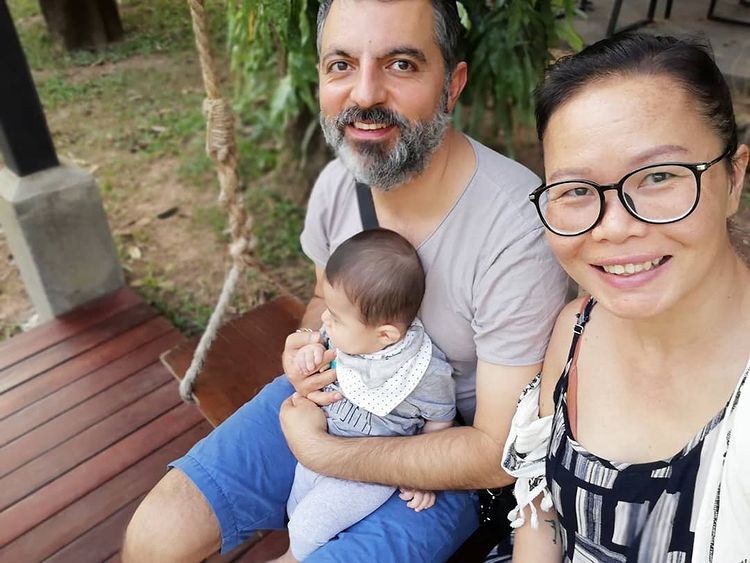

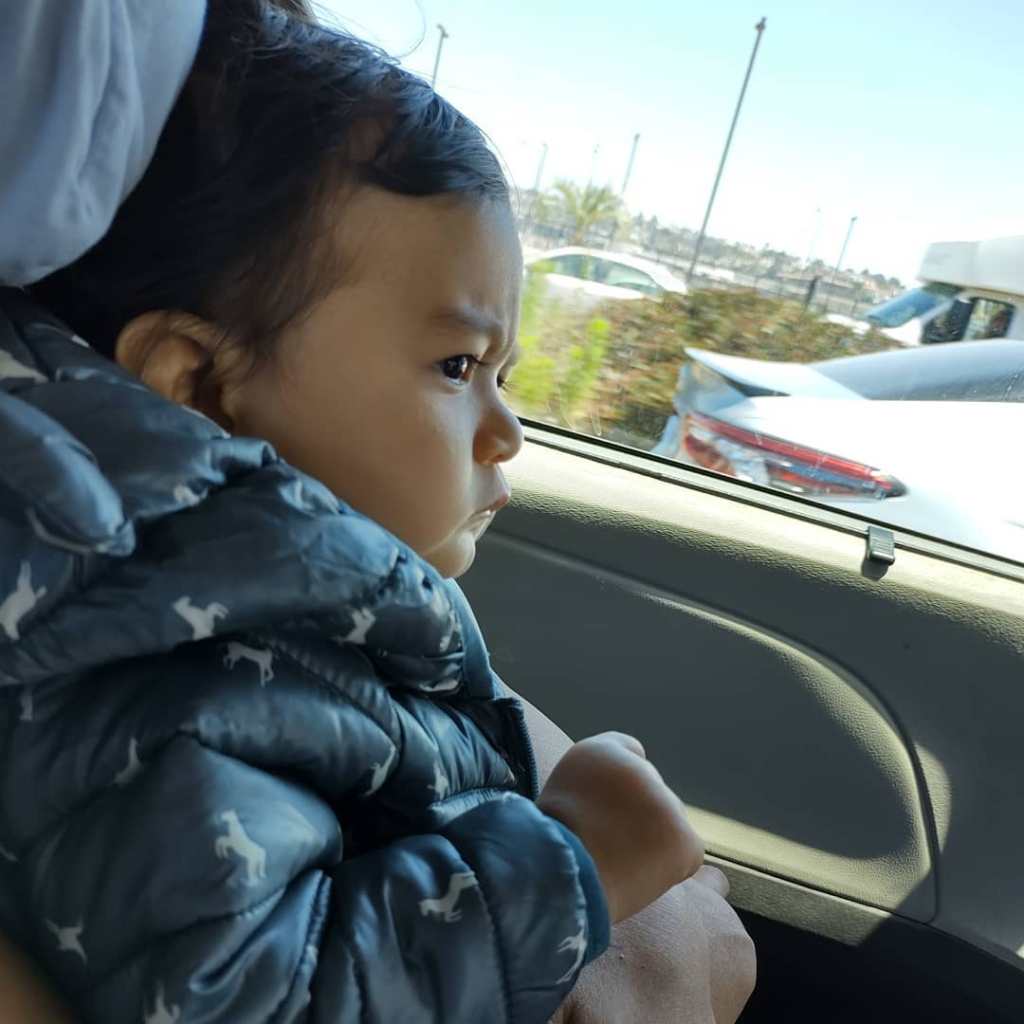
But, of course, I knew as soon as I was no longer a single person that it was no longer just about me, and I would have to return. I knew Ning wanted to have the experience of living in the US. As soon as we had registered our marriage we had applied for her visa. It was clear that opportunities will be more abundant for our kid, if he grew up in the US. My parents once had visited us, prior to Com’s birth, and had pleaded with me that we returned to the US.
The final straw was the COVID vaccine situation in Thailand. Just like Korea, Thailand had been virtually completely spared from the spread of the virus for the whole year 2020. By the middle of 2021, however, it was starting to catch on more quickly. Sadly, the mismanagement and corruptions of the officials, which is a way of life in Thailand, meant that vaccines were still nowhere to be found for the ordinary people, other than at the black market. In contrast, for months and months vaccines had been distributed freely and in abundance in the west.
For me, at that point, the return was now inevitable. As soon as Ning’s spouse visa came through and my PTK school duties for the year finished, we packed our things and said goodbye to my second home–Nong Khai.
On Com’s 1st birthday, late spring 2021, we boarded the plane to go live near my parents in Orange County, southern California.
Part 21: A Teacher’s Reward
Teaching teenagers is the most challenging, rewarding, and funnest job I’ve ever done. As I have been completing my career transition from research and academia to teaching, I have come to know a pain common to all teachers. That is the pain of feeling under-appreciated and misunderstood (should I add underpaid?). As with any other teacher, I’m quite used to it by now, but it might be worth visiting the subject a bit!
How about the “You couldn’t get a job at a community college?!” comment, for example, coming from your own friends and family!
I think this is something that’s in the psyche of many cultures and traditions, East and West alike. In so many minds, the lower level you teach the less respected a job you have:
If you’re a primary school teacher, it’s because you don’t have a brain. If you’re in middle and high school, then you’re wasting your talents and a lower element of society. If you’re teaching community college, then you’re living a somewhat decent life. And if you made it as a university professor, you’ve made it in life and worthy of respect!
In reality, though, in terms of the depth of challenge, responsibility, required expertise, as well as rewards, it’s actually the exact opposite: the younger the students the taller the task.
Here’s another one: “What’s up with all these teachers getting burned out? We all work hard! Don’t they literally get 3 months of summer vacation?!“
Most people have misconceptions about the job of a school teacher. A teacher’s job is literally to transfer a part of his/her own energy into the students. Yes, she is teaching a subject. Yes, she is giving and grading work. But those are all little things. Beyond else, she is transferring energy. She is giving herself.
You must have experienced the fact that giving energy to someone takes away your own energy. This is not a metaphorical concept. It’s a literal transfer of subtle energy. That’s what a teacher does, everyday, 5-6 periods a day, to 100-200 students a day.
Now to the subtle energy toll add the other weights: preparing for classes, the thinking and mind-chatter before and after each day: “What went wrong, what went well. What should I do next?”, the constant planning, teacher evaluations, etc. etc.
Now imagine the added pressure during the Omicron wave of the Covid-19 pandemic—teachers getting calls to substitute for other teachers on top of their own duties, on a daily or weekly basis.
Teachers are the most burned out in America for a reason (article). Their jobs are rather important! They need to be better taken cared for. Understanding can be a first step.
Part 22: Welcome Home. Your Troubles Now Begin!
When it comes to getting jobs I’ve always been the “spoiled kid”.
When I was 19 years old and fresh off the boat to America, so new that even my social security number hadn’t been issued, my mom and I walked into a random picture frame shop and asked if I could get a job. The owner, who had not put out a hiring sign, must have been touched by the unusual but sincere and daring act. She hired me on the spot. That’s how I scored my first job.
I was in my junior year in college when I got a half-year internship at Intel. Because of that initial getting my foot in the door, my Intel offer as a full-time automation engineer (a software engineering job) was in the mail, even before my graduation date. Later in graduate school I had invitation for a job at IBM Research, and with a single referral from my graduate advisor I went to work at Microsoft Research in India for half a year. I already mentioned how I joined Alan Kay’s research group even before finishing graduate school, without an application or interview.
Like I said, spoiled.
Having made my career transition from computer science field to teaching, though, I had quickly noticed that it was going to be a different story.
It was at the time I was scheming my exit from Ananda Village when I had started sending applications for teaching jobs in southern California. Getting no responses, I had rather quickly switched to sending college teaching applications. After that the Thailand job had happened. As a I said before, teaching jobs in Thailand came easy.
But, now, by June 2021, I was back in the USA, with my family. I knew this time I was going to have to really take on the daunting task of applying for teacher jobs in California.
Wanting some income security once we arrived, I actually started applying for jobs proactively while we were still in Thailand. I got a job offer from an education company in Los Angeles area which sent computer teachers to schools who wanted to add technology-related programs.
The problem, however, was that this was going to be a kind of downgrade from a real school teaching gig, which I had been blessed with in Thailand. Even more bothersome was the fact that it was going to be some two hours of driving away from orange country where my parents lived. Living close to family was one of our reasons for returning to US. Having come so close, it felt kind of silly to go find a job so far a way!
Part 23: Troubles Will Almost Break You Down
Given how quickly I had landed a teaching job even prior to my arrival to USA, I expected my job situation would quickly be settled. Little did I know, diametrically opposed to all my past lifetime experiences up to that point, my quest to land the right job was going to take nearly half a year, and it was literally going to bring me very close to a point of a physical breakdown.
This is how the 6-month saga unfolded.
The job I had signed up for was with a kind of a tutoring company. It wasn’t ideal and their location was very far from orange county, where my parents are at. More problematic yet for me was the fact that they offered ready-prepared computer/coding courses. That was not ideal.
I actually had become a computer curriculum developer prior to becoming a teacher. What I cherished the most about getting to teach computer science (CS) in the classrooms was the freedom to design the content and projects myself.
At Living Wisdom School in northern California, at BSD in Bangkok, and at the Nong Khai public school, I had been bestowed the trust of my supervisors and the flexibility of using my own “know-how” on CS to determine the curriculum. Through this experience, and through the journey of creating the Termeric curriculum marketplace website, I had come to think of myself foremost as an independent curriculum developer.
Seeing how clueless teachers and school administrators could be on what CS education should be, I had set out to use my strong background in CS to do reform. Most computer teachers don’t have a doctorate degree on the subject they teach, most don’t have much of actual industry work experience, and most haven’t been schooled by one of the pioneers of the field Alan Kay. I thought I was in a unique situation to make positive change in the education of CS in schools, which is a relatively new, emerging thing.
That’s why as as soon as I received an interview for another teacher position at another K-12 tech education place, I withdrew my plans with the original company. The new job had more than a few more pluses: it was in Irvine, very close to the home of my parents. Even better, after my initial chat with them they told me that they wanted me to develop K-12 CS curriculums for their classes. This was going to be exciting: just my thing!
I signed teacher and curriculum developer contracts with them, and put a lot of work into making a sample curriculum for them. Make a long story short, one month passed and neither had they paid me a dollar nor did they seem to be sure what they wanted me to do. Opportunity number 2 turned out to also be a bust.
I pushed on with an even greater zeal. Day after day, week after week, I took on the full-time job of applying for teaching jobs. And it started to take its toll.
It wasn’t that I wasn’t finding jobs. That would have been simple. It was that I was applying to too many jobs, getting too many interviews, even signing on too many contracts. Yet none of them was turning out to be the right one.
As the weeks of this struggle turned to a month and a month turned into many months, the mental burden of this constant seeking, planning, worrying, thinking, meeting and interviewing, getting a job then not working out, started to transfer into my physical body.
This was the first time in my life I felt I was getting pretty close to a physical body breakdown. And that’s saying a lot because I did six years of graduate school! My head started to feel heavier than usual, my neck and shoulders were becoming stiffer than usual to movement.
“The world is just a play we’re playing for fun. We need to play unattached.”
Then how come I was on the verge of breaking? Now this experience for a guy who is a daily meditator and once lived at a yoga community can be quite humbling. It feels like losing the battle.
And yet, with the prerogative of introspection, I can see only now that each one of those job opening “stations” where I had to temporarily make a stop at had their own special purpose. Time and time again, life has proven to me that it’s steered by a hidden divine flow that one can never understand whilst in the thick of it.
The Irvine job opening had convinced me to let go of the job that was too far from my parents. It was actually the reason I am living at the apartment in Irvine where we live in now, a 5-minute drive away from my parents. It had also given me a chance to work on my independent curriculum development work.
Another teacher job I temporarily signed on during this period was a hybrid education company which specialized in having expert subject teachers do live Zoom calls into classrooms. They had made this work by installing high quality teleconferencing equipment in classrooms in participating schools across the US and by sending classroom “facilitators” there, who would manage the classroom and facilitate the teleconference call with the actual subject teacher. I never got to teach a class with them, but they did give me the idea that perhaps it is possible to make live remote teaching work.
Living through this pandemic and through situation where so often the teacher is healthy enough to teach but cannot physically show up in the classroom due to isolation rules, I really think it’s worthwhile for schools to arrange for such remote calls. It sure beats sending a substitute teacher who has no idea what is happening in the classroom on a given day.
Yet another online teacher job I signed up for at another time was for offline instruction, where there was no live classes, but the teacher’s responsibilities were mostly limited to providing offline feedback on student work. Going through the orientation process of this job made me understand how totally different this kind of instruction is from the traditional teacher role in the classroom.
Most of the jobs I was applying for during this time were online jobs or for tutoring or after school programs. Occasionally, one or two actual school teacher positions would show up.
One of such openings that I had come across pretty early on during my teacher job hunting saga was for a computer science teacher at Garden Grove unified school district. They did get back to me, only to tell me that they rejected my application because they required a “CTE” teacher credential. However, they suggested that I looked into applying for one. Disappointed, I made a mental note of looking into this “CTE credential” thing in the future.
Part 24: CTE, My Ticket to Ride!
I had been seeking computer science teacher jobs for months. There were plenty of “education” jobs—online instruction and tutoring, curriculum development, etc.—but I rarely stumbled upon a real “school teacher” gig. For the ones I did find and apply to, I either didn’t heard back, or if I did it was a rejection.
Part of the problem was timing, I knew teacher position applications go up months and months before the school year. We were already in late summer and early fall, 2021. But my biggest problem, I knew, was lacking a teacher credential.
So I started seriously looking into enrolling in various teacher certification and credentialing programs, even getting a masters degree in education.
Looking for options, I remembered something I had bookmarked a couple of months before, based on a referral I had received from someone at the southern California school district Garden Grove Unified. In her email, along with her message of rejection of my application, she had mentioned that Orange County Department of Education offered an online teacher credentialing program for somethingl called CTE. CTE stands for “Career and Technical Education”, and after looking into it, to my rejoicing I discovered it was exactly what I needed. It was going to be my ticket to finally become a credentialed teacher in California.
CTE has its roots in vocational programs that started in the early 20th century, implemented to help high school students who were struggling academically get vocational training to find technical jobs.
By now, a century later, CTE has transformed into an entirely different thing, and has become a vital part of secondary school programs in the United States, helping students gain real-world, technical knowledge and skills, preparing them for their transition into both college and the highly technical job market. Students take elective CTE courses, not because they’re struggling with their core subjects. It’s usually the opposite: they’re motivated students who want to get ahead (or not fall behind everyone else!) and to have a strong, technical knowledge and skill set when their time comes for entering college and/or apply for high demand jobs.
CTE covers many industry sectors, including computer science and IT, hospitality, arts, architecture, agriculture, medical, and so on. Students take elective CTE courses based on their interests. They are taught by CTE teachers.
CTE teachers are people who didn’t go to college to become a teacher. Their college education and work experience was not in education. Rather, they studied their own technical fields and then worked in that industry for years. However, at some point, they decided to become secondary school teachers. In other words, exactly people like me!
As experts on their fields, CTE teachers are the best candidates for teaching their specific technical subject in schools.
On the account of their technical degree and expertise, and their past industry experience, CTE teacher candidates receive a preliminary CTE teacher credential as soon as they’re enrolled in the credentialing program. This makes them eligible to apply for and start a teaching position, teaching a CTE course on their field of expertise in middle/high schools.
CTE teachers need to complete only a few, online courses (on teaching methodologies, classroom management, etc.) and fulfill some other requirements to receive their full CTE teacher credential.
Excited and relieved to finally have found a way to get my foot in the door (of schools in California), I signed up for the CTE teacher credential program with the Orange Country Department of Education and started taking my first online course.
What I needed now was to find a CTE computer science teacher position from a southern California public school. But, if computer science school teacher gigs are hard to find, how hard would it be to find one which is specifically from a school district and specifically for a CTE teacher? My experience so far told me that such a chance was painfully minute.
Part 25: CTE Teacher at a Southern California Public High School
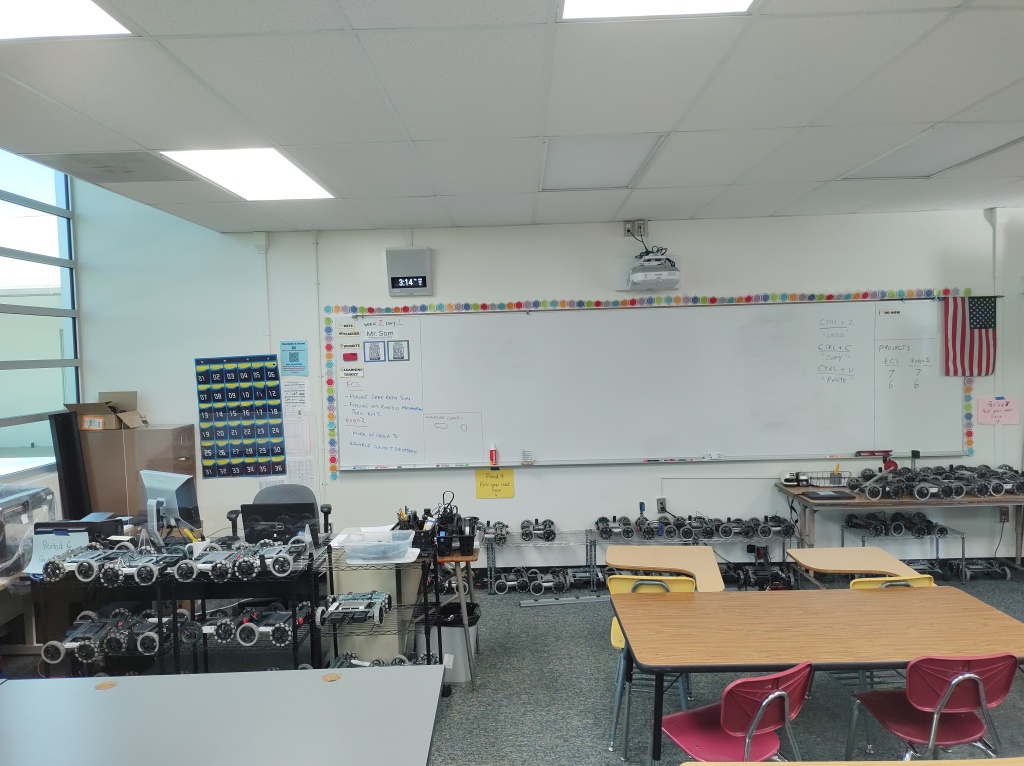
It was October 2021, some five months past my family’s arrival back at the US and the start of my home hunting and teacher job hunting saga. With each passing week I felt like the stress and the accumulated tension stored inside were bringing me closer and closer to a real breakdown of my body.
A few days after sharing that concern with my sister, a job application popped up on Indeed.com: a middle of the school year CTE teacher position at the Garden Grove Unified School District (in the Orange County of southern California) for a high school computer science teacher. This
seemed like just the thing I was searching for. Not only it was the right subject, but they were looking specifically for a teacher who has CTE credentials.
I quickly heard back with an invitation for an interview. I also found out something crazy about my whole application.
The district CTE director who was interviewing me was none other than the lady who, some 4-5 months before, at the beginnings of my struggles, had responded to my application then to inform me about such a thing as CTE. Moreover, she was telling me that at that time she was actually expecting my reply back to tell her that I intended to start my CTE credentialing program so that she could consider me for the open position then! I had only assumed she had rejected my application 4-5 months before!
I had to make a full circle over many months and many interviews, signed contracts, headaches and stressors, just to go back to the same employer with a different job opening!
The teacher for the robotics CTE class at the Garden Grove high school had been promoted to a TOSA (teacher advisor) position, hence the vacancy to fill her job mid-year.
Just a few hours after my phone interview with the team I received a voice message from the director that I had been given the job.
I remember vividly the moment I heard that voice message. I even vaguely remember the feeling in my body. Such a profound feeling of relief, contentment, and gratitude washed over me in an instant… My body tension instantly and observably cooled off to levels I hadn’t felt for months.
I started my role but a few days later, on November 1st 2021. I spent a couple of days shadowing the teacher whose class I was taking over and then a couple of days taking the wheel while she was observing. The next week I was on my own, teaching Robotics 1 & 2 class over three periods daily.
At the end of the day, our karma, in collaboration with the Divine provider, will bring us exactly the things we need at exactly the times we need them (, and not at the times we really want them 😉 ).
Part 26: What Keeps Me Going Back
I have been telling this long-winded story of how I ended up changing my career, leaving computer science academia to go sit behind a classroom teacher desk. Teaching for me has been that job where, once you get settled in it, you realize it’s what you were born to do. Nothing comes more naturally.
By the same token, teaching is, no doubt, the hardest and the most tiring job I have ever taken. And jobs I’ve had many: from customer service and cashiers at department stores, to cleaning crew at retreat centers, to software engineering jobs in the industry in Silicon Valley, to computer science academia, to freelance web development, and startup work in education and technology. Still, nothing saps your energy more than walking into that classroom, be it a single period, or a full days worth: six or seven.
It’s a combination of a multitude of things. It’s the preparation work every day, the unstopping school-related worrying, contemplation, retrospection, and planning that goes on in your mind nearly 24/7, the stress and uncertainties each time you walk into the classroom, the managing that one third of students in your class who are determined to make your life miserable as a payback for being forced to sit in your classroom, the responsibilities, the external and internal expectations, the unending demands the school puts on the shoulders of the teachers, complying to state standards, keeping the curriculum up-to-date, the teacher evaluations, the professional development training courses you’re expected to attend after school hours, the energy you literally give to your kids each day in the classroom, and so on. On top of all that, classroom management does not come naturally to me. I hate playing the teacher to uninterested or disruptive students.
Thank goodness for my favorite part of being a teacher: the (unpaid) school break holidays!
To summarize, teaching is a job which, “if I didn’t love it, I would definitely hate it!”
Despite all the harsh realities, my love of teaching keeps me going back to that classroom. Here’s why.
Many people might presume the difference between college-level and school-level teaching is in the academic level of the subject being taught. In truth, the two jobs are completely different, almost unrelated.
College is impersonal. A professor’s job is imparting some knowledge/skill set to his/her students. But transfer of academic knowledge is but a fraction of what’s happening inside a school classroom. Every teacher knows it.
Real classroom education has to be personal to be effective. A teacher’s job is to have a personal relationship with each student, to be an inspiration, a hope, a headlight to light up the possibilities forward, a big brother/sister to look up to, an example. The students absorb so much from a teacher, for good or bad! In that way, the role of a teacher is so much closer to that of a parent.
Believe it or not, the number one thing that keeps me stepping back into that classroom is the personal bonds I make with my individual students. These personal connections, perhaps especially for an introvert like me, are the most important and precious aspect of the job.
During my first teaching gig, which was at Ananda Living Wisdom School at Ananda Village, I had a 7th grader who was the highlight of my days. After my very first lesson introducing a programming platform, he went on to create an entire game out of it. The kid was a genius, and I joked with everyone that “expect Google or Facebook to kidnap him within 2 years!” Aside from his obvious interest and excitement in my coding class because of his expertise in it, we had an instant natural bond. You could tell sitting in my classroom was a bright part of his day, and so was it for me. It was a big brother/little brother friendship, more than a “grownup authority” kind of a thing.
I’ve had similar, special bonds with many students at every school I’ve had the opportunity to serve in since. This isn’t something that can just happen with those students who do well academically. This meaningful, individual bond that forms between me and every student, the back-and-forth and dynamic spiritual feedback that establishes between us, the two-way education, is the one thing that keeps me alive in this career more than anything else.
Part 27: An Outsider’s Prerogative
My training, degree, and experience was in computer science, not education or teaching. It’s been a few years since I have formally joined the teacher community. Here are some of my thoughts, now that I have been teaching along these professionals who were properly trained and educated as teachers.
I realize that I stand in an interesting place, as a computer scientist turned teacher. On the one hand, as a novice teacher, at times I still do feel I lack the knowledge, training, and experience necessary to perform well and effectively in the classroom. On the other hand, I think being an “outsider teacher” gives me a perspective and understanding that I feel gets lost among “insider teachers”, and among the teacher and education community in general.
Let me start with where I think I lack.
Having come from computer science academia and being familiar with university level education, my understanding of what it meant to “teach” a subject was solely based on academic knowledge. That is, I thought of teaching a course as imparting certain knowledge and skill set to your students.
Once I started my teacher credential training courses and joined the school teacher community, however, I quickly realized that K-12 education is an entirely different phenomenon. Possessing and transfer of technical knowledge is but a fraction of what a teacher needs to be trained on and concerned with, in order to be an effective teacher in the classroom. I quickly learned that there’s a whole science to teaching (hence the education degrees!). There are teaching pedagogies and methodologies that teachers get educated on, from classroom management, to forms of teaching, to assessment, to supporting individual student needs, and it goes on and on.
Over the past couple of years, since my return to the US and officially pursuing my teacher credential and undergoing various teacher training programs, I have been slowly acquiring this vital knowledge and skill. As a late arrival to the teaching profession, I obviously still have a long way to go to be able to effectively apply these tools and skills in my classroom.
There are, on the other hand, places where I feel I have an edge over the average teacher and an average education community perspective, precisely because of being the outsider and my alternative point of view.
Allow me to harp on for a bit!
2021 was my first year teaching in a US public high school. When I took over a classroom as a teacher, I gave them a written instruction sheet with steps 1-N to follow to complete a project.
I was aghast to see how few students were able to simply follow the steps. They would look at it clueless and overwhelmed. Many would just give up. I guess they were just used to the teacher giving them a worksheet to fill in the blanks, just like elementary or middle school.
After making them persevere over a whole year, I did notice more of the students gradually becoming capable of following step by step instructions on their own.
This I feel might be one of the reasons for the poor level of K-12 education in America. We expect so little from students, and we don’t give them enough credit.
Those who are training you on your education degree or during your average professional development teacher training courses obviously don’t have knowledge about your specific content. That’s your subject to teach after all. Thus, based on what I have seen going on in teacher and professional training sessions, I feel there’s too much emphasis put on “subject-agnostic” teacher methodologies and techniques, and too little focus on the actual subject and the technical knowledge.
This I suspect has been a factor in the overall poor level of academic knowledge among our students.
This imbalance between the emphasis on teaching methodologies vs actual academic content also affects how teachers are evaluated. I have
seen so much of the focus gets put on: “Did this teacher write the objectives of the lesson on the board?”, “Did he have the perfect opening and timing, the perfect balance of individual activity vs group work?” Rarely do I see teacher supervisors wondering: “Does this teacher actually have passion for his/her subject?” “How deep is her/his own understanding of this subject, knowing what’s important and not important to teach?” “Does this teacher fire up passion within his/her students about the subject?”
I may be wrong, but I feel the takeaway for the teacher community in general due to this emphasis on teaching methodologies and ignoring the actual knowledge of the subject has been that it doesn’t matter what you teach, but how you teach it.
I don’t feel that way at all! I started creating my own curriculum before I had a chance to become a teacher in the classroom. To me the content is everything. The curriculum is my pride and joy! I think what you teach is more important. You can teach the most irrelevant and wrong topic to students, in the most beautiful “textbook” way, doing all the things they teach you in teacher school. But to me, none of that matters if you haven’t captured student imagination and created a classroom where deep learning can occur.
Teaching methodologies and techniques are good, but, to me, they polish the content. They shouldn’t take precedence over the content. They are the tool in a teacher’s toolbox that can make a lesson drastically better.
Here’s a book I recommend that captured my feeling on this:
The Courage to Teach: Exploring the Inner Landscape of a Teacher’s Life

Part 28: Outro
This blog has been a detailed account of how I shifted course from computer science academia and eventually became a computer science school teacher. A couple of years ago, when I told my sister the news of finally landing a proper school teacher job here in California, I told her I finally understood why I had to suffer half a year to get it… The perfect position had to come along: a computer science high school teacher job opening, specifically to those who come from the industry and hold a CTE (Career & Technical Education) credential, in a public school, in a trusting and flexible classroom environment that allows me to design and test out my own curriculum ideas and content.
At the time of writing this, I am on my second school year working at this southern California public high school as a computer science teacher. And, unlike any other jobs I’ve had in the past, I don’t feel I’d be leaving this job soon.
I give myself perhaps maximum some 6-8 years more, however, before I would retire, because, based on my experience, every year of a teaching job ages you at a rate of around 3-4 times any other job I’ve had, and because my Vedic astrological reading marked the age of 48 as the year I would exit the active, “service-ful” phase of my life!
A truly dizzying and long-winded transition this has been for me indeed. It started in 2015, when, by no real discernible logic, I left my career in computer science with no intention to return, in order to study and work in the realm of spirituality and yoga, followed by moving to the spiritual community of Ananda Village. It was there when I had the unexpected return to computer work, from a request to create a mobile application. That work in turn sparked my interest in teaching computer programming, which eventually led to my full transition toward a career as a school teacher.
At the start of this transition, my mom’s reading of my leaving of my job and moving to Ananda was that “it was just phase.” Her take turned out to be both right and wrong. It was wrong if we think of a phase as some sort of a mistake or detour. True if we understood the move as a stepping stone: a stepping stone as part of many gradual steps that were supposed to get me to where I am today.
I guess this blog has been a story about faith: faith in a process that, no doubt, each individual’s path takes one towards where one needs to be. As with mine, many a person’s journey ought to be long, crazy, unpredictable, anti-logical, and at times confusing and scary. And the best thing we could do is to fully embrace it. Nothing could have prepared me better for this winding path than the spiritual foundations that I acquired following my breaking from computer science work!
Related book:
The Surrender Experiment: My Journey into Life’s Perfection
